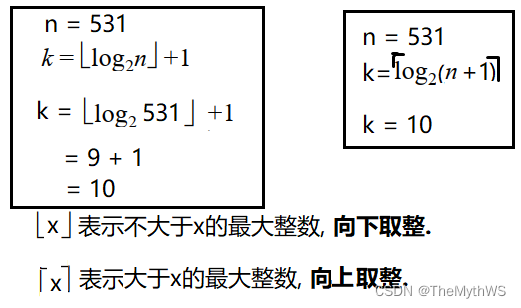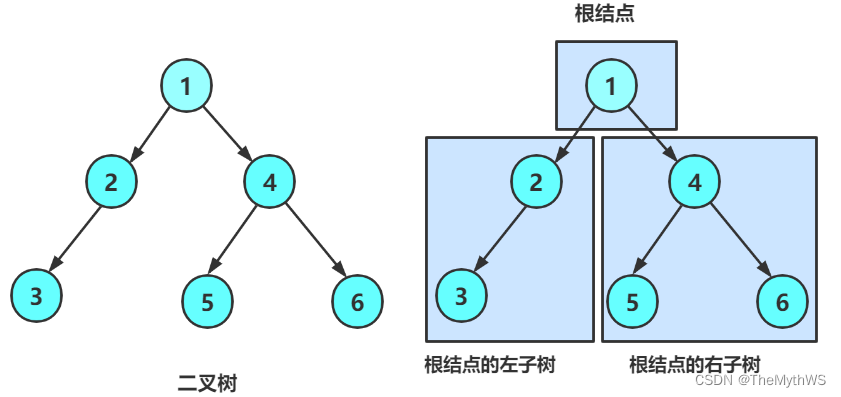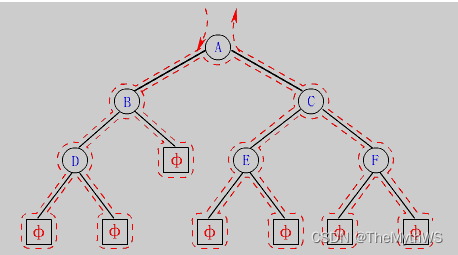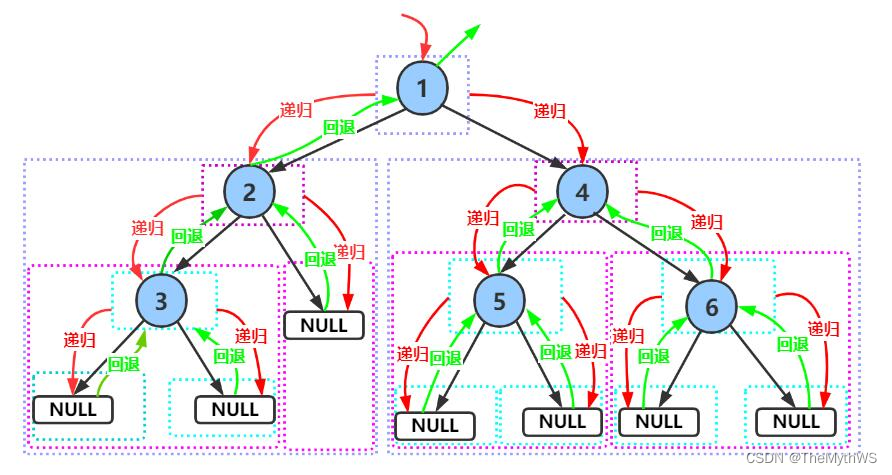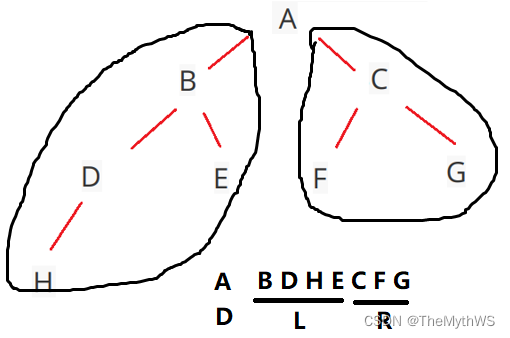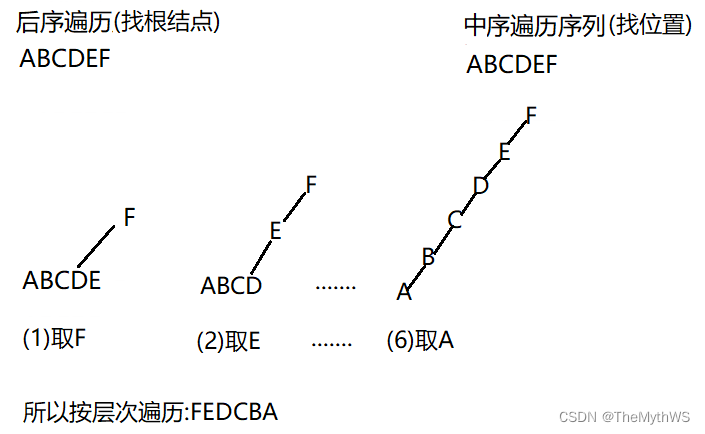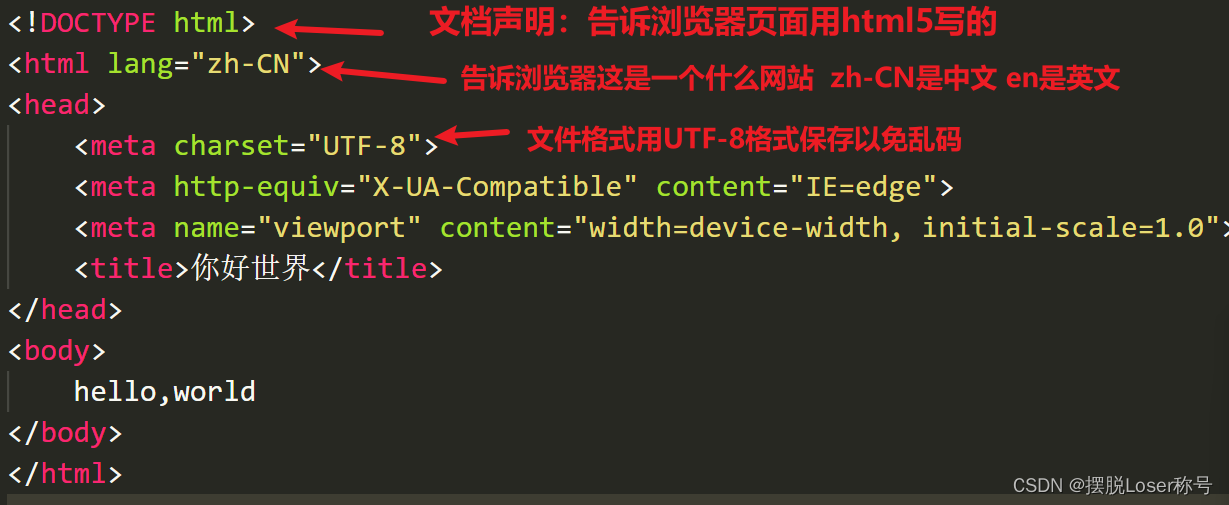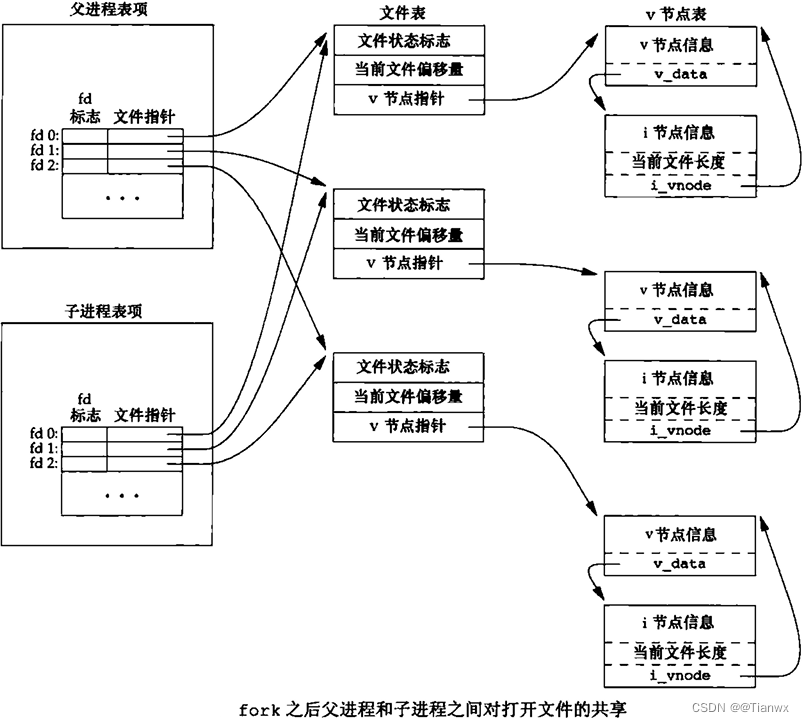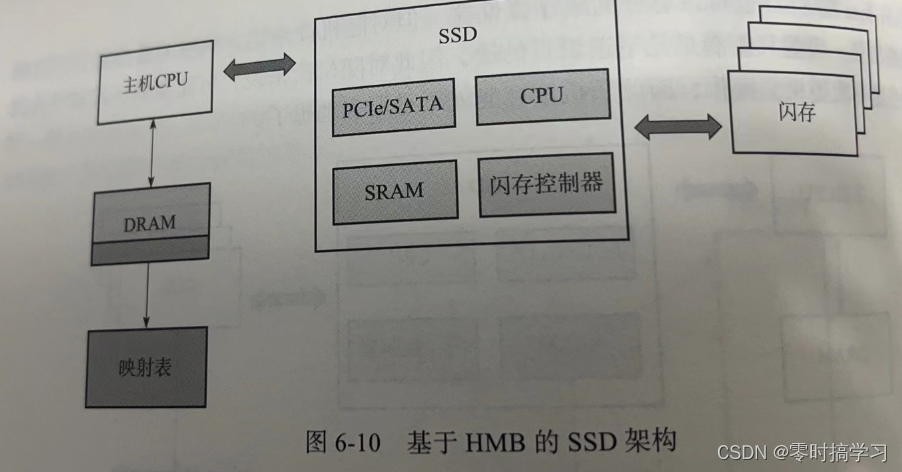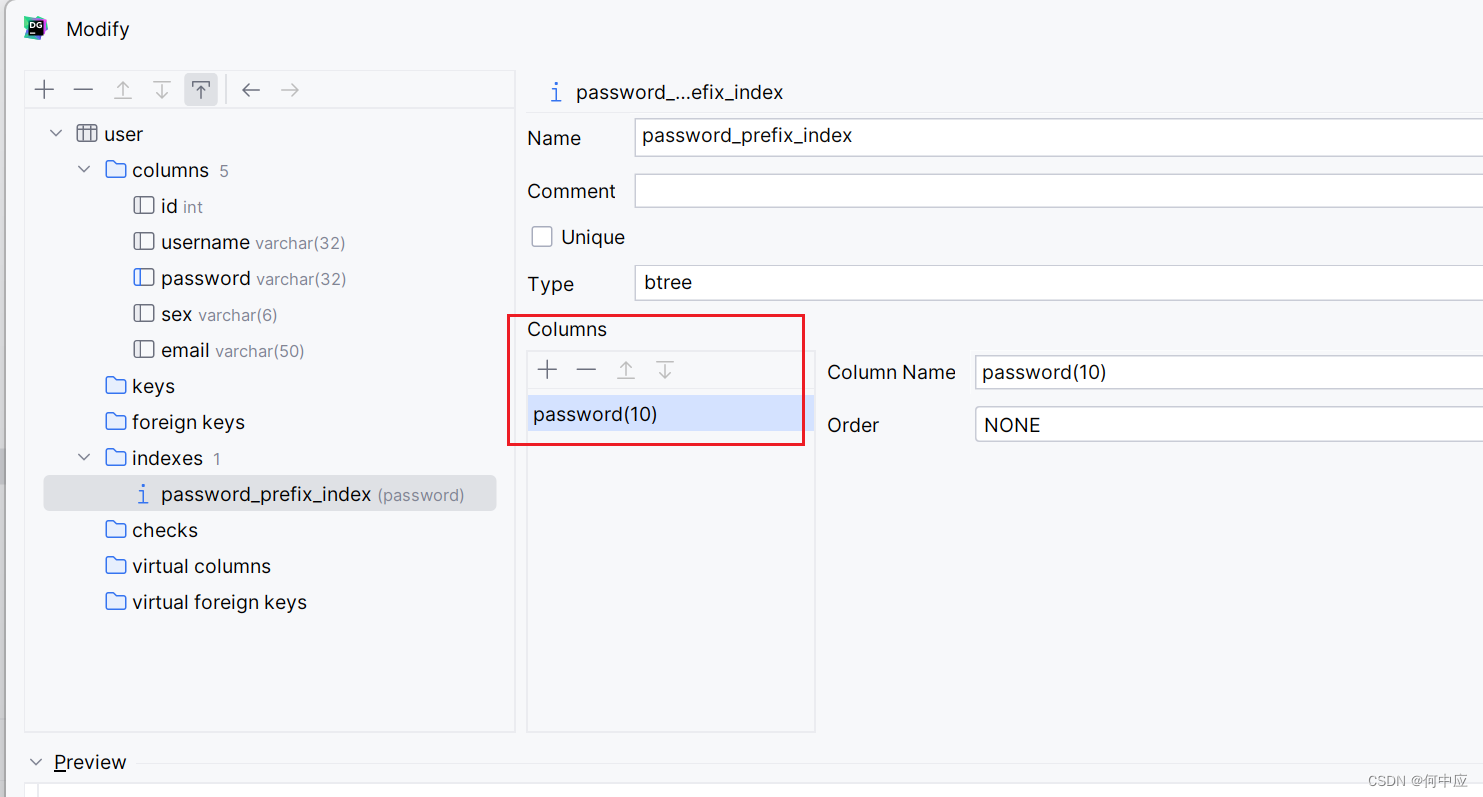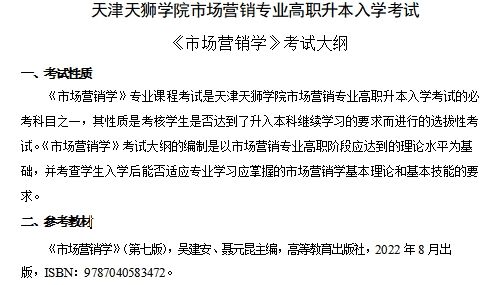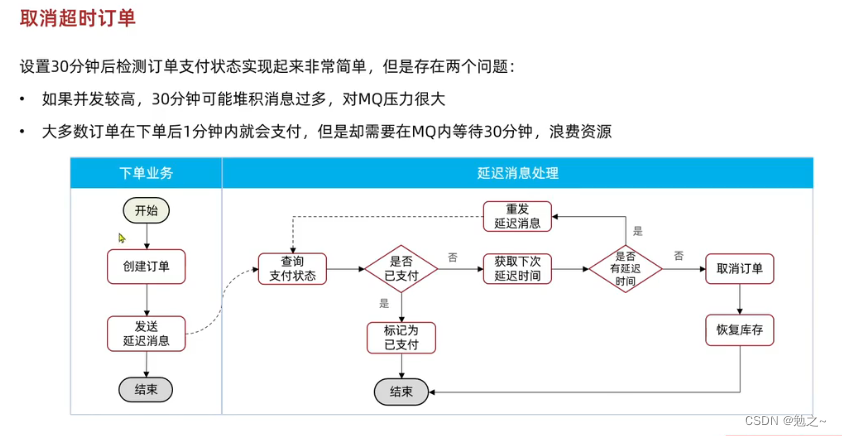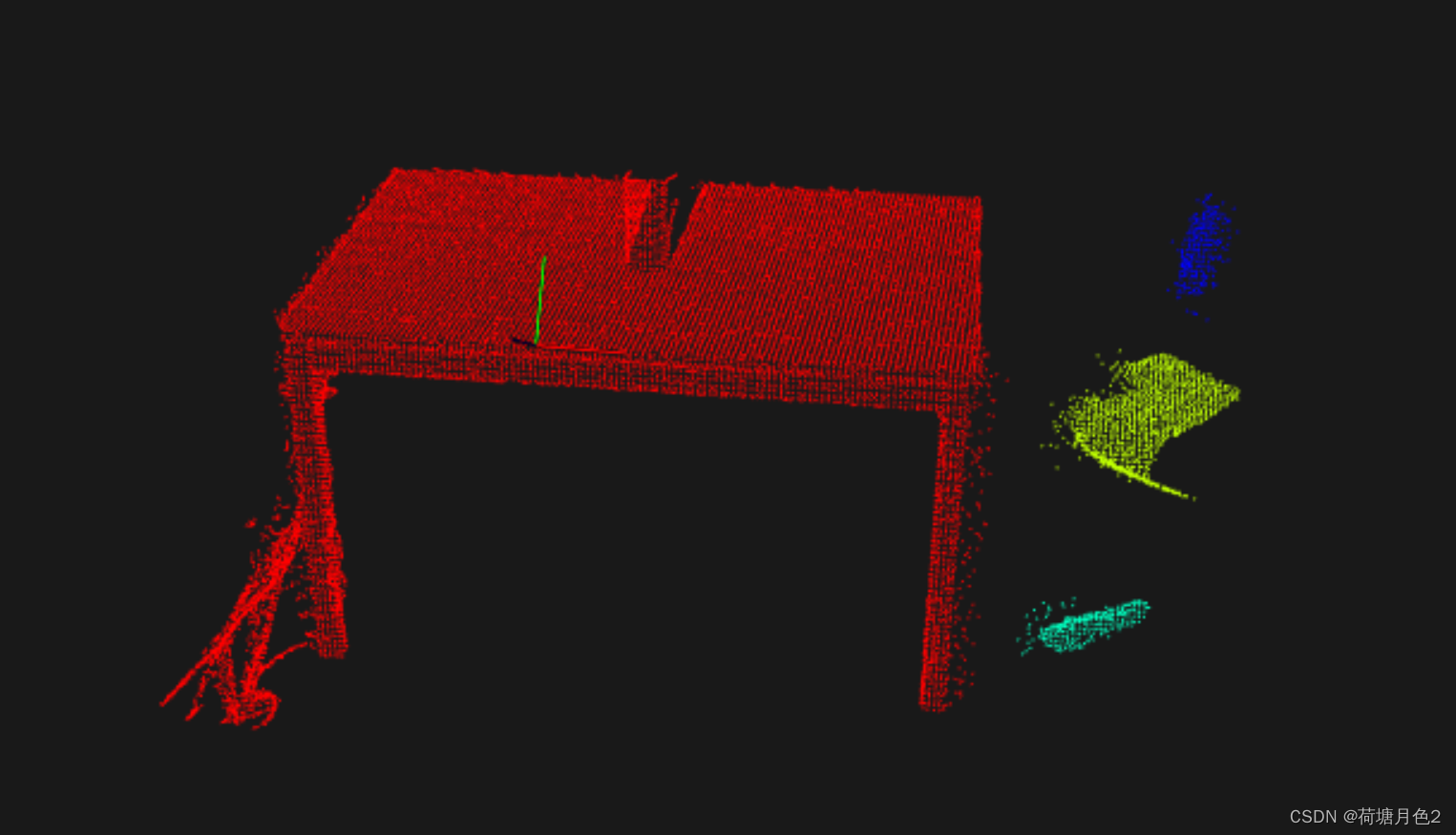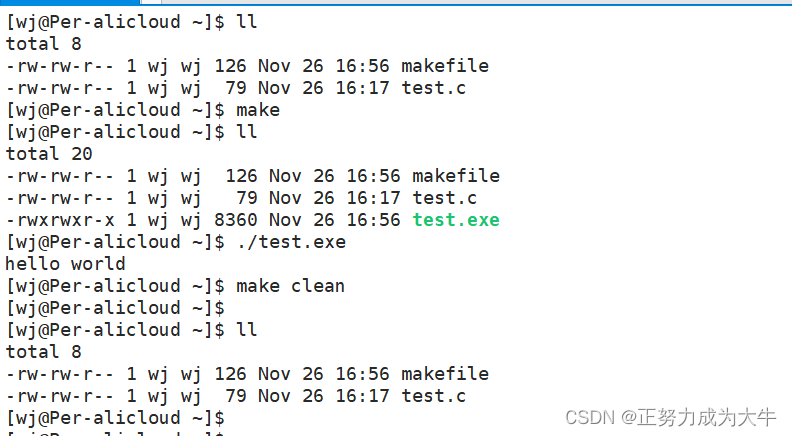🌠作者:@TheMythWS.
🎇座右铭:不走心的努力都是在敷衍自己,让自己所做的选择,熠熠发光。
目录
树形结构
概念
树的示意图
树的基本术语
树的表示
树的应用
二叉树(重点)
二叉树的定义
二叉树的五种不同形态
两种特殊的二叉树
二叉树的性质(重点!!!)
练习题
二叉树的存储
二叉树的基本操作
二叉树的遍历概念理解( (Traversing Binary Tree) )
1.先序遍历(DLR)
2.中序遍历(LDR)
3.后序遍历(LRD)
练习题一
4.层序遍历
练习题二
递归实现-先序中序后序遍历
非递归实现-先序中序后序遍历:
获取树中结点的个数
获取叶子结点(度为0的结点)的个数
获取第K层结点的个数
获取二叉树的高度
检测值为value的元素是否存在
层序遍历
判断一棵树是不是完全二叉树
OJ练习题
树形结构
概念
树是一种非线性的数据结构,它是由n(n>=0)个有限结点组成一个具有层次关系的集合。把它叫做树是因为它看起来像一棵倒挂的树,也就是说它是根朝上,而叶朝下的。
它具有以下的特点:
- 有一个特殊的结点,称为根(root)结点,根结点没有直接前驱结点, 只有后继结点.
- 除根结点外,其余结点被分成M(M > 0)个互不相交的集合T1、T2、......、Tm,其中每一个集合Ti (1 <= i <=m) 又是一棵与树类似的子树。每棵子树的根结点有且只有一个前驱,可以有0个或多个直接后继
- 树是递归定义的。
树的示意图
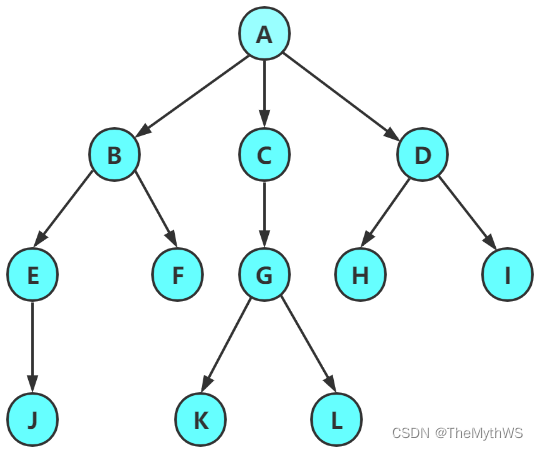
注意:树形结构中,子树之间不能有交集,否则就不是树形结构
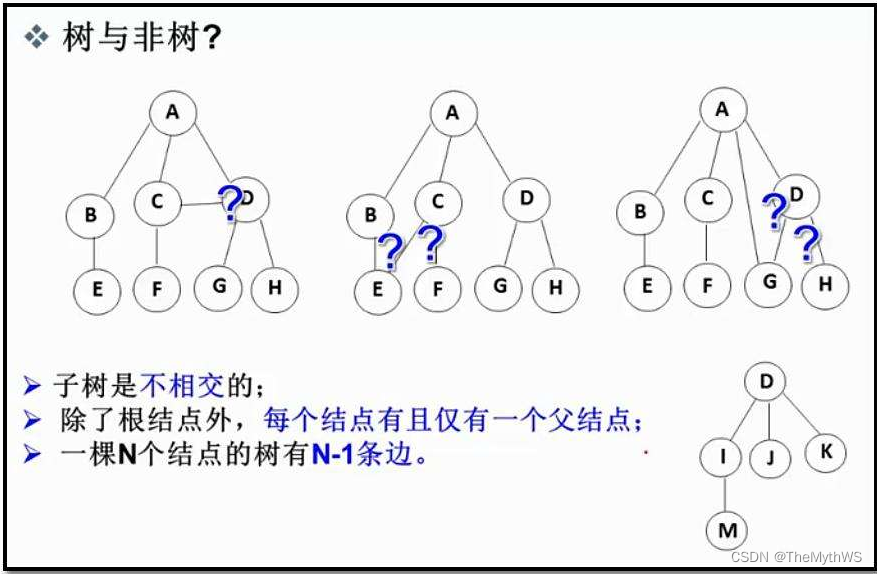
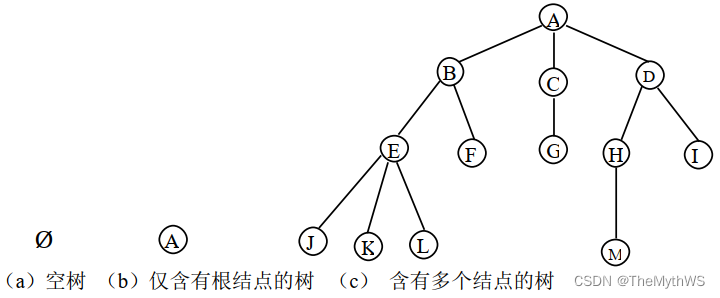
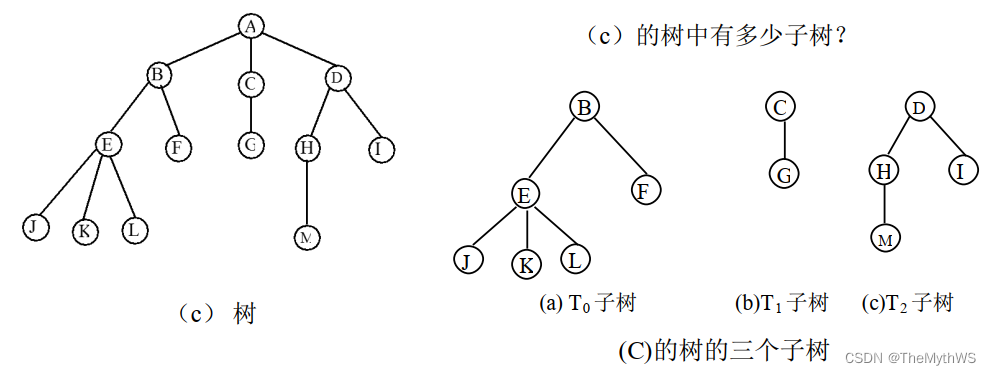
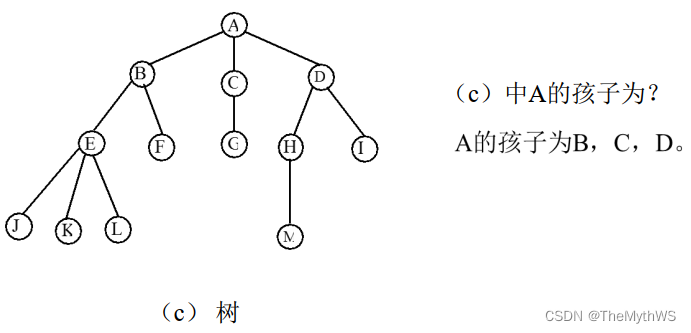
树的基本术语
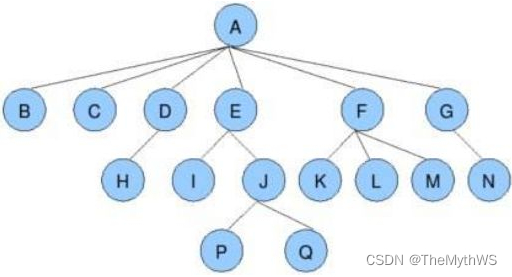
结点的度:一个结点含有子树的个数称为该结点的度; 如上图:A的度为6
树的度:(唯一性)一棵树中,所有结点度的最大值称为树的度; 如上图:树的度为6
叶子结点或终端结点:度为0的结点称为叶子结点; 如上图:B、C、H、I...等结点点为叶子结点
双亲结点或父结点:若一个结点含有子结点,则这个结点称为其子结点的父结点; 如上图:A是B的父结点
孩子结点或子结点:一个结点含有的子树的根结点称为该结点的子结点; 如上图:B是A的孩子结点
根结点:一棵树中,没有双亲结点的结点;如上图:A
结点的层次:从根开始定义起,根为第1层,根的子结点为第2层,以此类推
树的高度或深度:树中结点的最大层次; 如上图:树的高度为4树的以下概念只需了解,只要知道是什么意思即可:
非终端结点或分支结点:度不为0的结点; 如上图:D、E、F、G...等节点为分支结点
兄弟结点:具有相同父结点的结点互称为兄弟结点; 如上图:B、C是兄弟结点
堂兄弟结点:双亲在同一层的结点互为堂兄弟;如上图:H、I互为堂兄弟结点
结点的祖先:从根到该结点所经分支上的所有结点;如上图:A是所有结点的祖先
子孙:以某结点为根的子树中任一结点都称为该结点的子孙。如上图:所有结点都是A的子孙
有序树与无序树:若一棵树中所有子树从左到右的排序是有顺序的,不能颠倒次序,称该树为有序树;反之称为无序树。
森林:由m(m>=0)棵互不相交的树组成的集合称为森林
树的表示
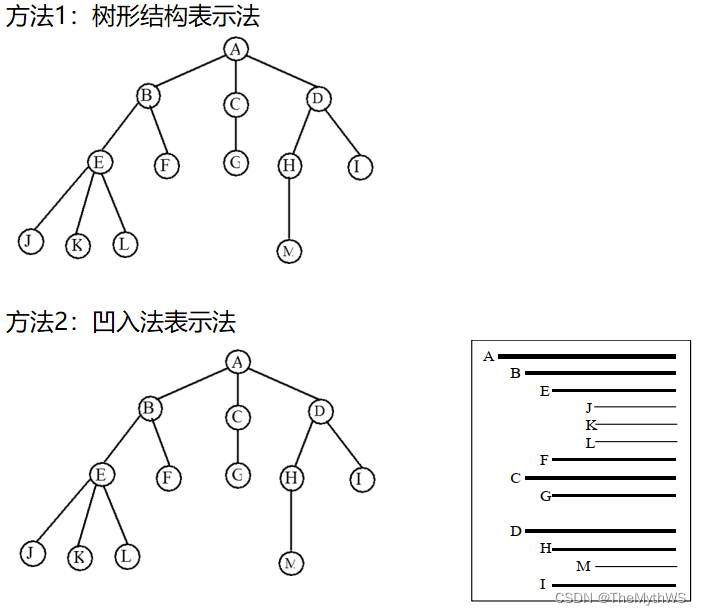
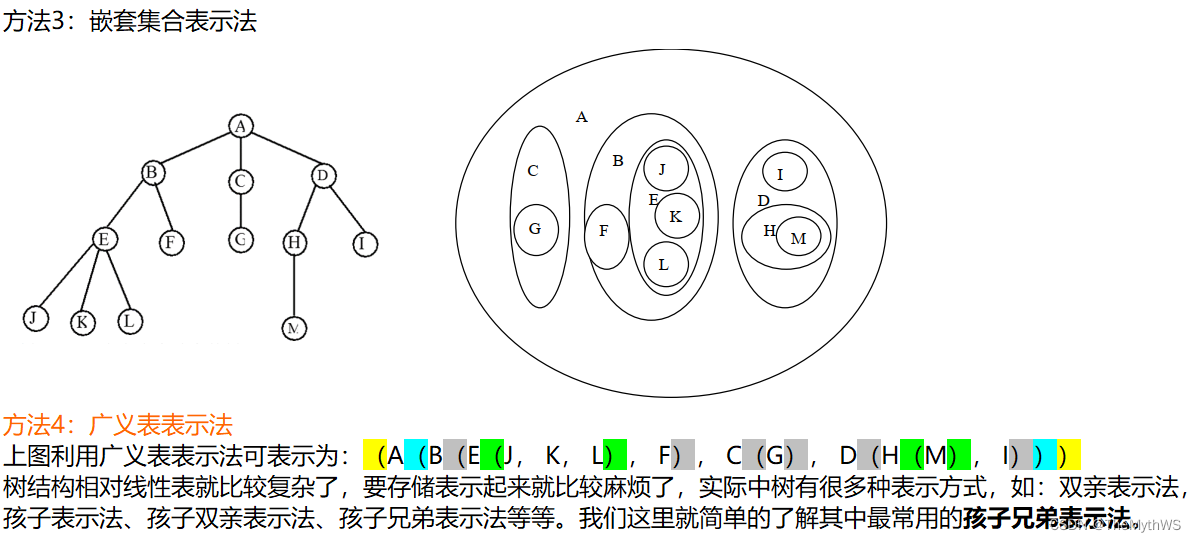
class Node {
int value; // 树中存储的数据
Node firstChild; // 第一个孩子引用
Node nextBrother; // 下一个兄弟引用
}
树的应用
文件系统管理(目录和文件)

二叉树(重点)
二叉树的定义
一棵二叉树是结点的一个有限集合,该集合:
1. 或者为空
2. 或者是由一个根结点加上两棵别称为左子树和右子树的互不相交的二叉树组成。
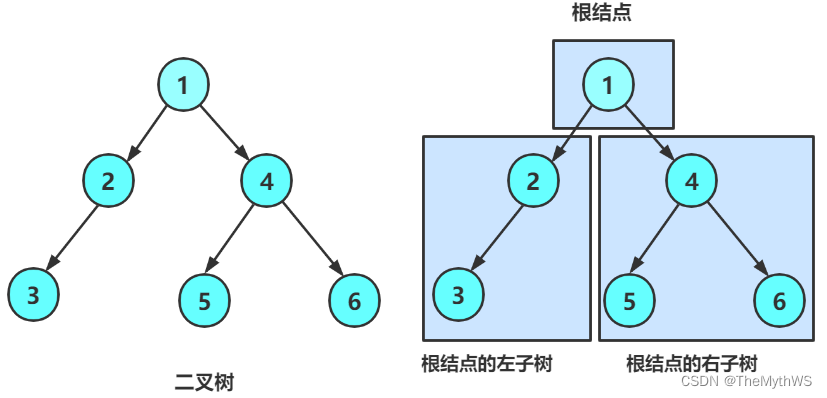
特点:
1) 每个结点的度≤2;
2) 是有序树;
说明: 二叉树的特点是每个结点最多有两个孩子, 或者说, 在二叉树中, 不存在度大于2的结点,
并且二叉树是有序树( 树为无序树), 其子树的顺序不能颠倒。
二叉树的五种不同形态
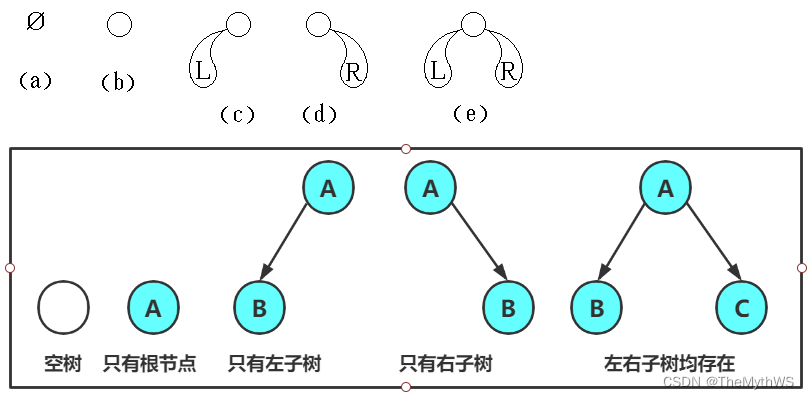
两种特殊的二叉树
1. 满二叉树: 一棵二叉树,如果每层的结点数都达到最大值,则这棵二叉树就是满二叉树。也就是说,如果一棵二叉树的层数为K,且结点总数是2^k - 1,则它就是满二叉树。
2. 完全二叉树: 完全二叉树是效率很高的数据结构,完全二叉树是由满二叉树而引出来的。对于深度为K的,有n个结点的二叉树,当且仅当其每一个结点都与深度为K的满二叉树中编号从0至n-1的结点一一对应时称之为完全二叉树。
要注意的是满二叉树是一种特殊的完全二叉树。
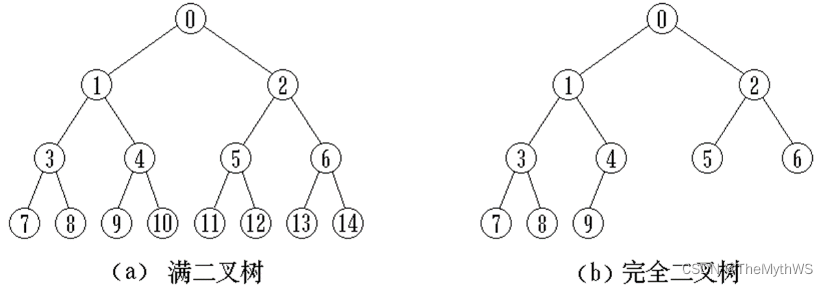
二叉树的性质(重点!!!)
练习题
1. 某二叉树共有 399 个结点,其中有 199 个度为 2 的结点,则该二叉树中的叶子结点数n0为( )
A 不存在这样的二叉树
B 200
C 198
D 199
n0 = n2 + 1 = 2002.在具有 2n 个结点的完全二叉树中,叶子结点个数为( )
A n
B n+1
C n-1
D n/2
3.一个具有767个结点的完全二叉树,其叶子结点个数为()
A 383
B 384
C 385
D 386
奇数个结点的完全二叉树说明没有度为1的结点, 则767 = n0 + n2, n0 = n2 + 1, n2 = n0 - 1, 767 = 2n0 - 1, n0 = 384.4.一棵完全二叉树的结点数为531个,那么这棵树的高度为( )
A 11
B 10
C 8
D 12
二叉树的存储
顺序存储结构(数组表示)
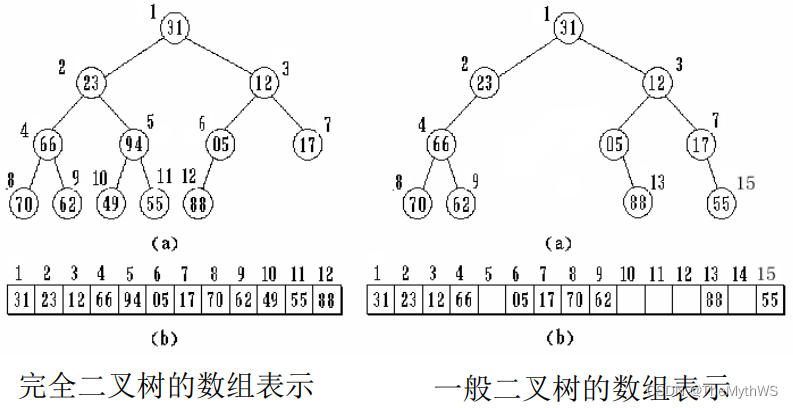
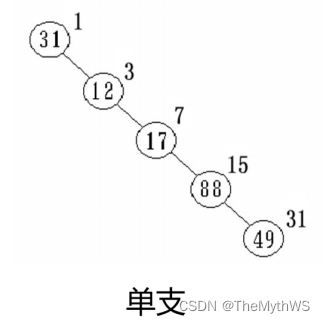
链式存储结构(指针表示)
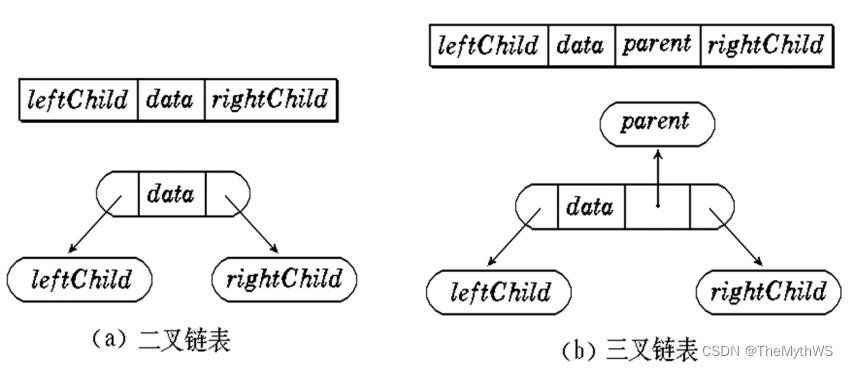
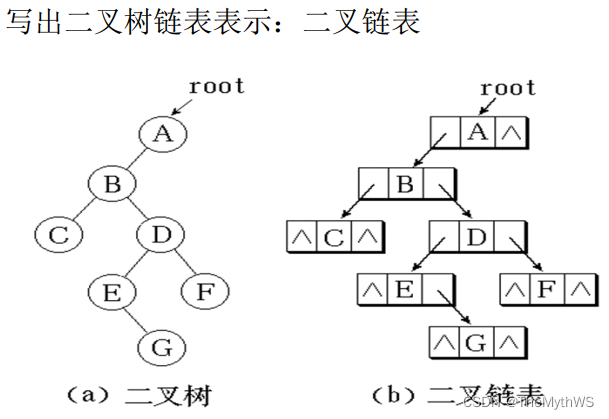
二叉树的链式存储是通过一个一个的结点引用起来的,常见的表示方式有二叉和三叉表示方式,具体如下:
// 孩子表示法
class Node {
int val; // 数据域
Node left; // 左孩子的引用,常常代表左孩子为根的整棵左子树
Node right; // 右孩子的引用,常常代表右孩子为根的整棵右子树
}
// 孩子双亲表示法
class Node {
int val; // 数据域
Node left; // 左孩子的引用,常常代表左孩子为根的整棵左子树
Node right; // 右孩子的引用,常常代表右孩子为根的整棵右子树
Node parent; // 当前结点的根结点
}二叉树的基本操作
前置说明
此处手动快速创建一棵简单的二叉树,快速进入二叉树操作学习,等二叉树结构了解的差不多时,我们反过头再来研究二叉树真正的创建方式。
public class BinaryTree {
public static class BTNode {
BTNode left;
BTNode right;
int value;
BTNode(int value) {
this.value = value;
}
}
private BTNode root;
public void createBinaryTree() {
BTNode node1 = new BTNode(1);
BTNode node2 = new BTNode(2);
BTNode node3 = new BTNode(3);
BTNode node4 = new BTNode(4);
BTNode node5 = new BTNode(5);
BTNode node6 = new BTNode(6);
root = node1;
node1.left = node2;
node2.left = node3;
node1.right = node4;
node4.left = node5;
node5.right = node6;
}
public static void main(String[] args) {
BinaryTree binaryTree = new BinaryTree();
binaryTree.createBinaryTree();
}
} 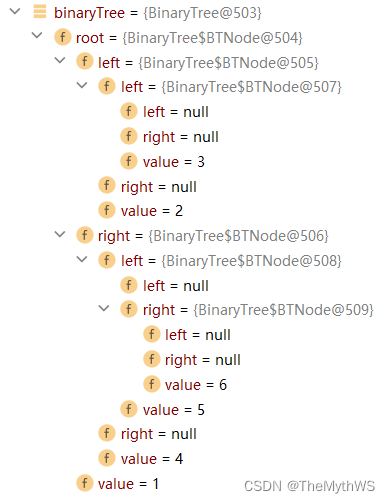
注意:上述代码并不是创建二叉树的方式,真正创建二叉树方式后序详解重点讲解.
从概念中可以看出,二叉树定义是递归式的,因此后序基本操作中基本都是按照该概念实现的。
二叉树的遍历概念理解( (Traversing Binary Tree) )
1.先序遍历(DLR)

2.中序遍历(LDR)

3.后序遍历(LRD)

练习题一
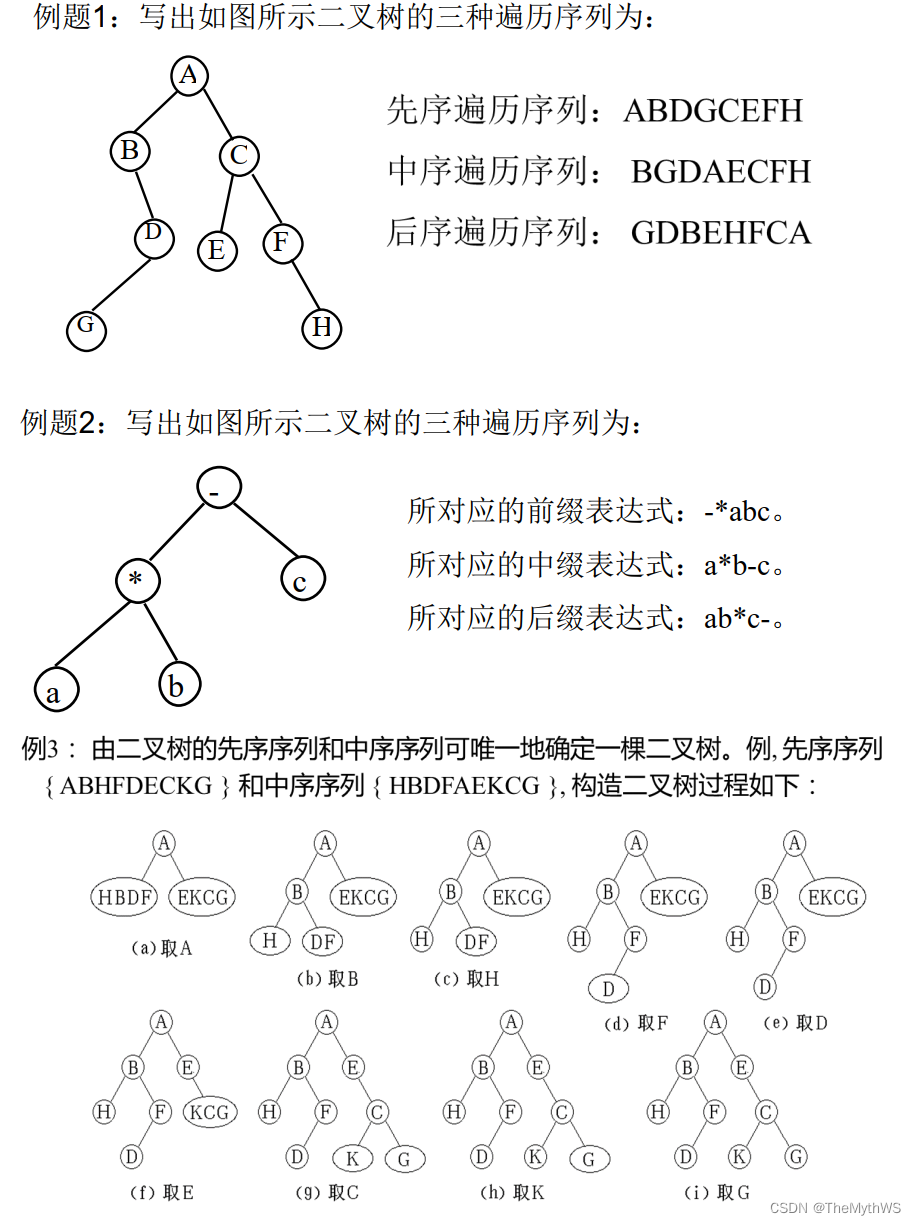
问题1:如何可唯一地确定一棵二叉树?
答:先序(找根)+中序(找位置) 或 后序(找根)+中序(找位置)均可唯一地确定一棵二叉树
先序 + 后序(X)问题2:二叉树的二叉链表存储结构中,有多少个指针域未利用?
答:二叉树的二叉链表存储结构中,假如有n个结点, 则共有2n个指针域(定义的)
已经使用的有n-1个指针域,所以有2n - (n - 1) = n+1个指针域未利用.
为什么是n - 1?(因为减去了一个根结点, 根结点是没有被指向的, 有n个结点除了根结点, 孩子结点就是n-1个)
4.层序遍历
设二叉树的根结点所在层数为1,层序遍历就是从所在二叉树的根结点出发,首先访问第一层的树根结点,然后从左到右访问第2层上的结点,接着是第三层的结点,以此类推,自上而下,自左至右逐层访问树的结点的过程就是层序遍历。
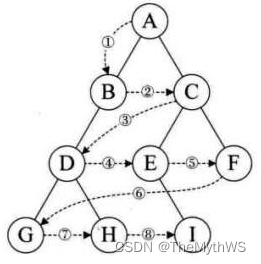
总结:
学习二叉树结构,最简单的方式就是遍历。所谓遍历(Traversal)是指沿着某条搜索路线,依次对树中每个结点均做一次且仅做一次访问。访问结点所做的操作依赖于具体的应用问题(比如:打印节点内容、节点内容加1)。
遍历是二叉树上最重要的操作之一,是二叉树上进行其它运算之基础。
在遍历二叉树时,如果没有进行某种约定,每个人都按照自己的方式遍历,得出的结果就比较混乱,如果按照某种规则进行约定,则每个人对于同一棵树的遍历结果肯定是相同的。
如果D代表根结点,L代表根结点的左子树,R代表根结点的右子树,则根据遍历根结点的先后次序有以下遍历方式:
- DLR:前序遍历(Preorder Traversal 亦称先序遍历)——访问根结点--->根的左子树--->根的右子树。
- LDR:中序遍历(Inorder Traversal)——根的左子树--->根节点--->根的右子树。
- LRD:后序遍历(Postorder Traversal)——根的左子树--->根的右子树--->根结点。
分析前序递归遍历,中序与后序图解类似
前序遍历结果:1 2 3 4 5 6
中序遍历结果:3 2 1 5 4 6
后序遍历结果:3 2 5 6 4 1
练习题二
1.某完全二叉树按层次输出(同一层从左到右)的序列为 ABCDEFGH 。该完全二叉树的前序序列为()
A: ABDHECFG B: ABCDEFGH C: HDBEAFCG D: HDEBFGCA
2.二叉树的先序遍历和中序遍历如下:先序遍历:EFHIGJK;中序遍历:HFIEJKG.则二叉树根结点为()
A: E B: F C: G D: H3.设一课二叉树的中序遍历序列:badce,后序遍历序列:bdeca,则二叉树前序遍历序列为()
A: adbce B: decab C: debac D: abcde
4.某二叉树的后序遍历序列与中序遍历序列相同,均为 ABCDEF ,则按层次输出(同一层从左到右)的序列为()
A: FEDCBA B: CBAFED C: DEFCBA D: ABCDEF
递归实现-先序中序后序遍历
我们先基于以下二叉树结构来实现:
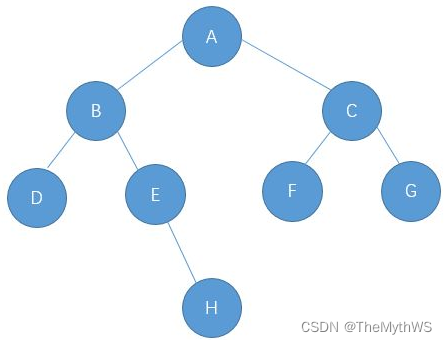
public class TestBinaryTree {
static class TreeNode {
public char val;//数据域
public TreeNode left;//左孩子的引用
public TreeNode right;//右孩子的引用
public TreeNode(char val) {
this.val = val;
}
}
//public TreeNode root;//二叉树的根结点
public TreeNode createTree() {
TreeNode A = new TreeNode('A');
TreeNode B = new TreeNode('B');
TreeNode C = new TreeNode('C');
TreeNode D = new TreeNode('D');
TreeNode E = new TreeNode('E');
TreeNode F = new TreeNode('F');
TreeNode G = new TreeNode('G');
TreeNode H = new TreeNode('H');
A.left = B;
A.right = C;
B.left = D;
B.right = E;
C.left = F;
C.right = G;
E.right = H;
//this.root = A;
return A;
}
// 前序遍历
void preOrder(TreeNode root) {
if (root == null) {
return;
}
System.out.print(root.val + " ");
preOrder(root.left);
preOrder(root.right);
}
// 中序遍历
void inOrder(TreeNode root) {
if (root == null) {
return;
}
inOrder(root.left);
System.out.print(root.val + " ");
inOrder(root.right);
}
// 后序遍历
void postOrder(TreeNode root) {
if (root == null) {
return;
}
postOrder(root.left);
postOrder(root.right);
System.out.print(root.val + " ");
}
}public class Test {
public static void main(String[] args) {
TestBinaryTree testBinaryTree = new TestBinaryTree();
TestBinaryTree.TreeNode root = testBinaryTree.createTree();
testBinaryTree.preOrder(root);
System.out.println();
testBinaryTree.inOrder(root);
System.out.println();
testBinaryTree.postOrder(root);
}
}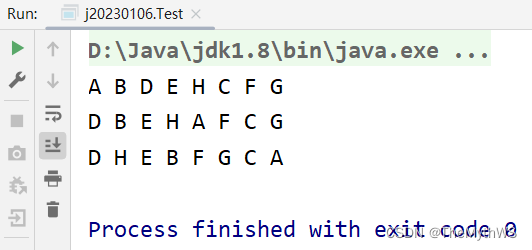
非递归实现-先序中序后序遍历:
此次我们对二叉树结构做了微调:
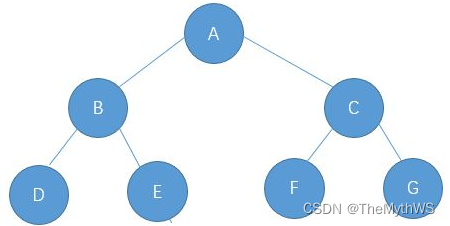
先序图解

中序图解

后序图解
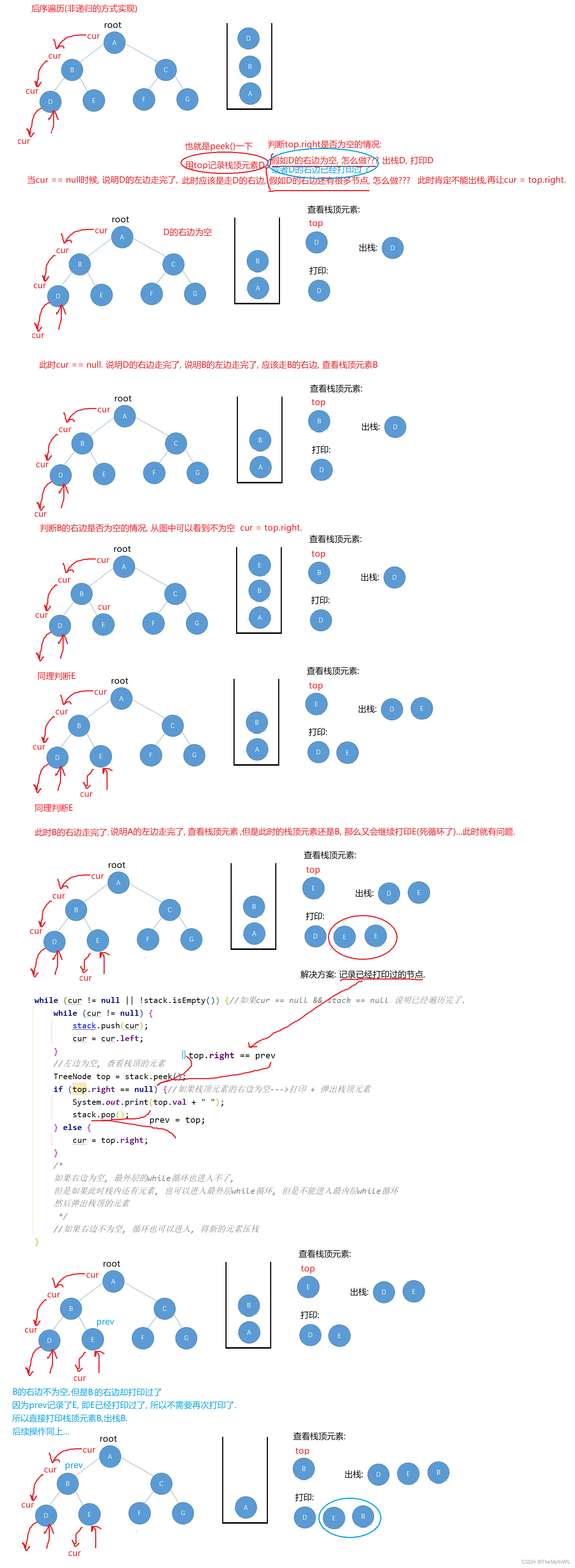
(直接修改创建二叉的代码)
public TreeNode createTree2() {
TreeNode A = new TreeNode('A');
TreeNode B = new TreeNode('B');
TreeNode C = new TreeNode('C');
TreeNode D = new TreeNode('D');
TreeNode E = new TreeNode('E');
TreeNode F = new TreeNode('F');
TreeNode G = new TreeNode('G');
TreeNode H = new TreeNode('H');
A.left = B;
A.right = C;
B.left = D;
B.right = E;
C.left = F;
C.right = G;
//E.right = H;
//this.root = A;
return A;
}
//非递归实现前序遍历:
public void preOrderNor(TreeNode root) {
if (root == null) {
return;
}
TreeNode cur = root;
Deque<TreeNode> stack = new ArrayDeque<>();
while (cur != null || !stack.isEmpty()) {//如果cur == null && stack == null 说明已经遍历完了.
while (cur != null) {
stack.push(cur);
System.out.print(cur.val + " ");
cur = cur.left;
}
//左边为空, 弹出栈顶的元素
TreeNode top = stack.pop();
cur = top.right;
/*
如果右边为空, 最外层的while循环也进入不了,
但是如果此时栈内还有元素, 也可以进入最外层while循环, 但是不能进入最内层while循环
然后弹出栈顶的元素
*/
//如果右边不为空, 循环也可以进入, 将新的元素压栈
}
}
//非递归实现中序遍历:
public void inOrderNor(TreeNode root) {
if (root == null) {
return;
}
TreeNode cur = root;
Deque<TreeNode> stack = new ArrayDeque<>();
while (cur != null || !stack.isEmpty()) {//如果cur == null && stack == null 说明已经遍历完了.
while (cur != null) {
stack.push(cur);
cur = cur.left;
}
//左边为空, 弹出栈顶的元素
TreeNode top = stack.pop();
System.out.print(top.val + " ");
cur = top.right;
/*
如果右边为空, 最外层的while循环也进入不了,
但是如果此时栈内还有元素, 也可以进入最外层while循环, 但是不能进入最内层while循环
然后弹出栈顶的元素
*/
//如果右边不为空, 循环也可以进入, 将新的元素压栈
}
}
//非递归实现后序遍历:
public void postOrderNor(TreeNode root) {
if (root == null) {
return;
}
TreeNode cur = root;
TreeNode prev = null;//这个引用用来记录已经打印过的节点
Deque<TreeNode> stack = new ArrayDeque<>();
while (cur != null || !stack.isEmpty()) {//如果cur == null && stack == null 说明已经遍历完了.
while (cur != null) {
stack.push(cur);
cur = cur.left;
}
//左边为空, 查看栈顶的元素
TreeNode top = stack.peek();
if (top.right == null || top.right == prev) {//如果栈顶元素的右边为空或者栈顶元素的右边已经打印过--->直接打印 + 弹出这个栈顶元素,不需要要再往后遍历不然会重复打印,顺便记录刚刚这个栈顶元素也被打印过了,下次也不要打印它了
System.out.print(top.val + " ");
stack.pop();
prev = top;
} else {
cur = top.right;
}
/*
如果右边为空, 最外层的while循环也进入不了,
但是如果此时栈内还有元素, 也可以进入最外层while循环, 但是不能进入最内层while循环
然后查看栈顶的元素, 再判断.
*/
//如果右边不为空, 循环也可以进入, 将新的元素压栈
}
}
public static void main(String[] args) {
TestBinaryTree testBinaryTree = new TestBinaryTree();
TestBinaryTree.TreeNode root = testBinaryTree.createTree2();
testBinaryTree.preOrderNor(root);
System.out.println();
testBinaryTree.inOrderNor(root);
System.out.println();
testBinaryTree.postOrderNor(root);
}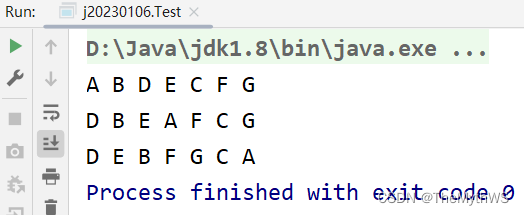
接下来我们用以下二叉树结构进行其它操作

获取树中结点的个数
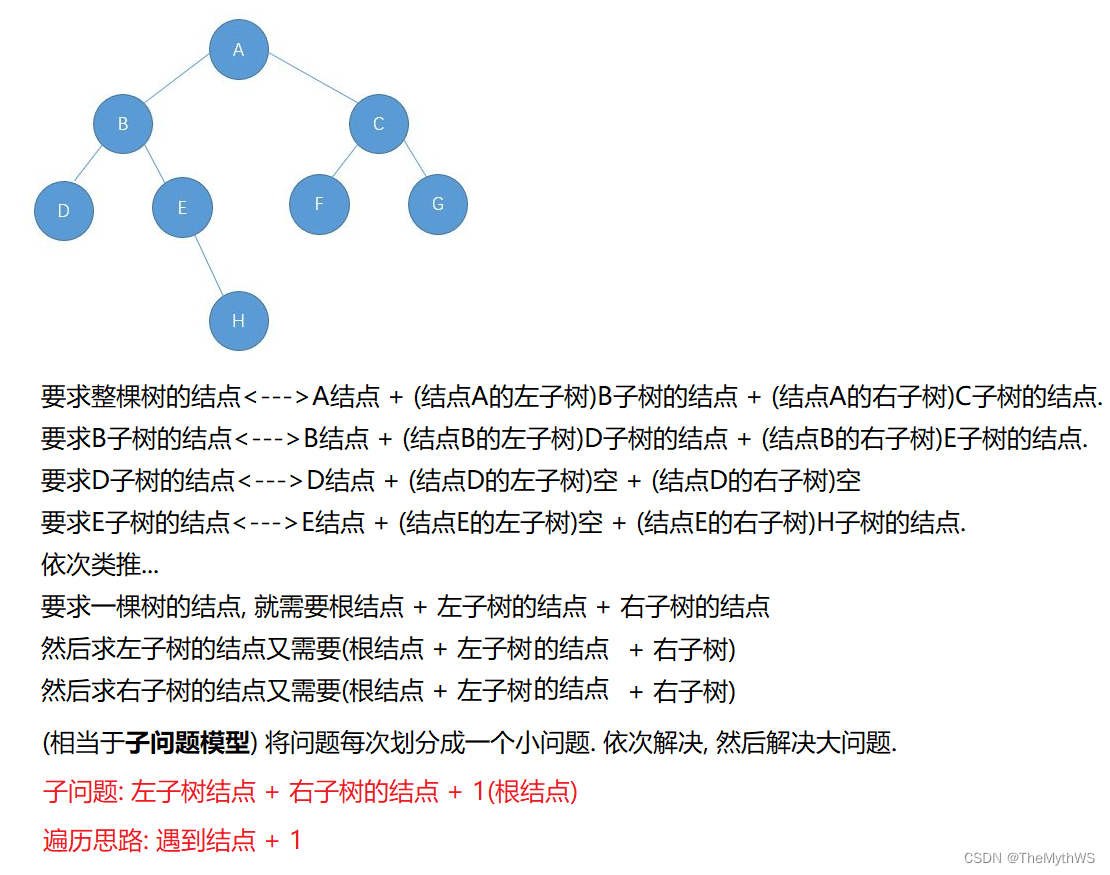
// 获取树中结点的个数
// 时间复杂度:O(N)
// 空间复杂度:O(logN)满二叉树的情况, 相当于树的高度 ~ O(N)单分支树的情况.
int size(TreeNode root) {
//子问题思路(左子树结点 + 右子树结点 + 1) 建议写法!
if (root == null) {
return 0;
}
int leftSize = size(root.left);
int rightSize = size(root.right);
return leftSize + rightSize + 1;
}
public static int nodeSize;//注意这儿有问题, 在OJ上如果有两个树对象测试结点个数, 那么会测试出来的结点个数相同, 因为它们共用nodeSize了.
public void size2(TreeNode root) {
//遍历思路(遇到结点就 + 1)
if (root == null) {
return;
}
nodeSize++;
size2(root.left);
size2(root.right);
}public class Test {
public static void main(String[] args) {
TestBinaryTree testBinaryTree = new TestBinaryTree();
TestBinaryTree.TreeNode root = testBinaryTree.createTree();
System.out.println("(size1方法)结点个数: " + testBinaryTree.size(root));//8
testBinaryTree.size2(root);
int nodeSize = TestBinaryTree.nodeSize;
System.out.println("(size2方法)结点个数: " + nodeSize);//8
System.out.println("----------------");
TestBinaryTree testBinaryTree2 = new TestBinaryTree();
TestBinaryTree.TreeNode root2 = testBinaryTree2.createTree();
System.out.println("(size1方法)结点个数: " + testBinaryTree.size(root));//8
testBinaryTree.size2(root);
int nodeSize2 = TestBinaryTree.nodeSize;
System.out.println("(size2方法)结点个数: " + nodeSize2);//16, 结果有问题, 是因为nodeSize是静态变量, 新建一棵树对象会共用nodeSize, 所以遍历出来的结点个数有问题.
}
}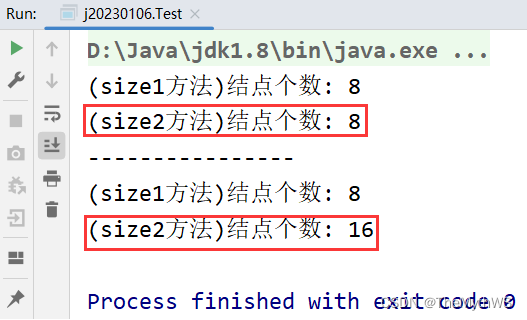
获取叶子结点(度为0的结点)的个数
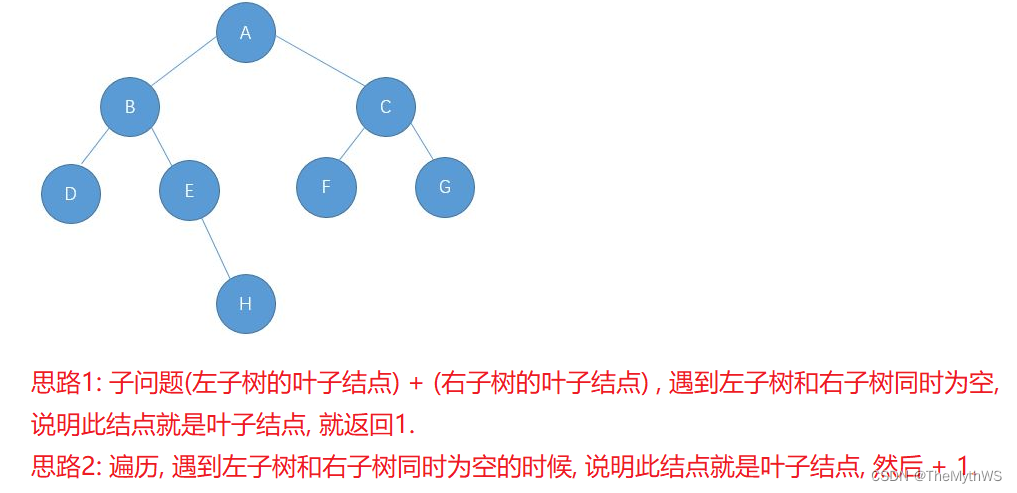
// 获取叶子结点的个数
// 子问题:左子树的叶子结点 + 右子树的叶子结点
int getLeafNodeCount(TreeNode root) {
if (root == null) {
return 0;
}
if (root.left == null && root.right == null) {
//遇到叶子结点了.
return 1;
}
int leftSize = getLeafNodeCount(root.left);
int rightSize = getLeafNodeCount(root.right);
return leftSize + rightSize;
}
public int leafSize;
// 遍历思路:遇到叶子结点就 + 1
public void getLeafNodeCount2(TreeNode root) {
if (root == null) {
return;
}
if (root.left == null && root.right == null) {
//遇到叶子结点了.
leafSize++;
}
getLeafNodeCount2(root.left);
getLeafNodeCount2(root.right);
}public class Test {
public static void main(String[] args) {
TestBinaryTree testBinaryTree = new TestBinaryTree();
TestBinaryTree.TreeNode root = testBinaryTree.createTree();
System.out.println("叶子结点的个数: " + testBinaryTree.getLeafNodeCount(root));
testBinaryTree.getLeafNodeCount2(root);
System.out.println("叶子结点的个数: " + testBinaryTree.leafSize);
}
}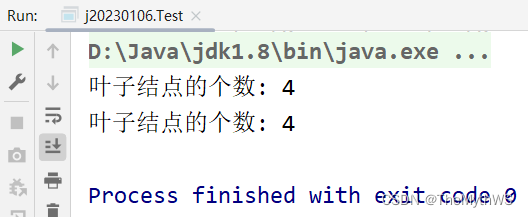
获取第K层结点的个数
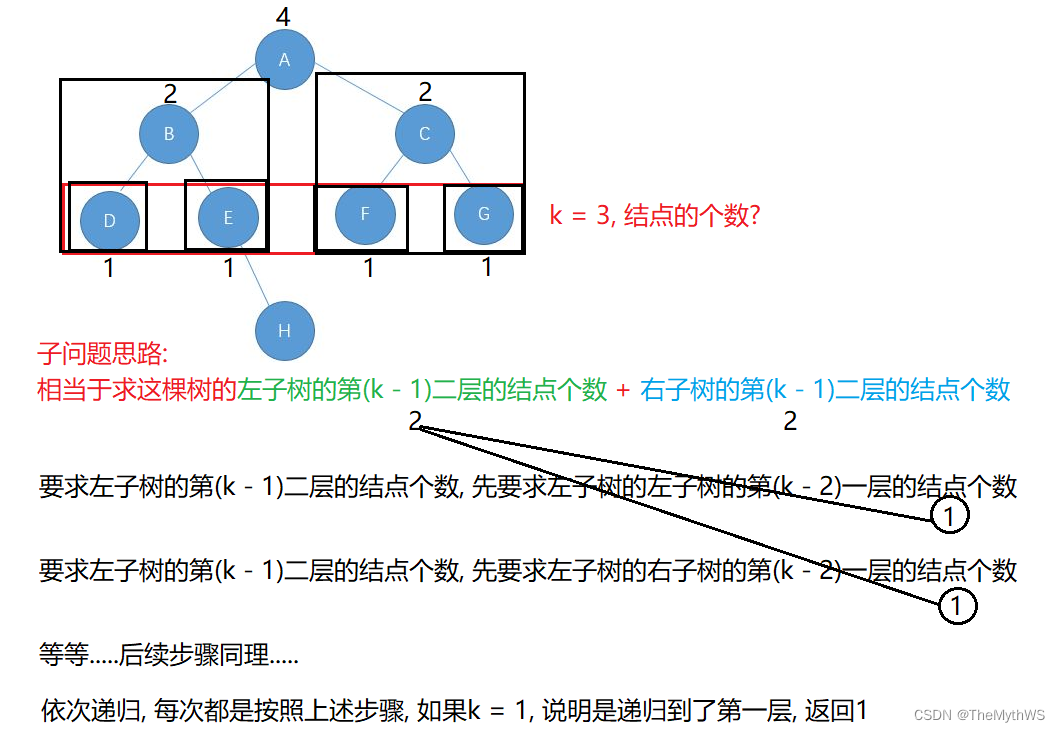
// 获取第K层结点的个数
int getKLevelNodeCount(TreeNode root, int k) {
if (root == null) {
return 0;
}
if (k == 1) {
return 1;
}
int leftSize = getKLevelNodeCount(root.left, k - 1);
int rightSize = getKLevelNodeCount(root.right, k - 1);
return leftSize + rightSize;
}public class Test {
public static void main(String[] args) {
TestBinaryTree testBinaryTree = new TestBinaryTree();
TestBinaryTree.TreeNode root = testBinaryTree.createTree();
System.out.println("第k层的结点个数: " + testBinaryTree.getKLevelNodeCount(root, 3));
}
}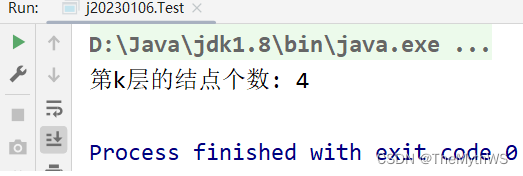
获取二叉树的高度
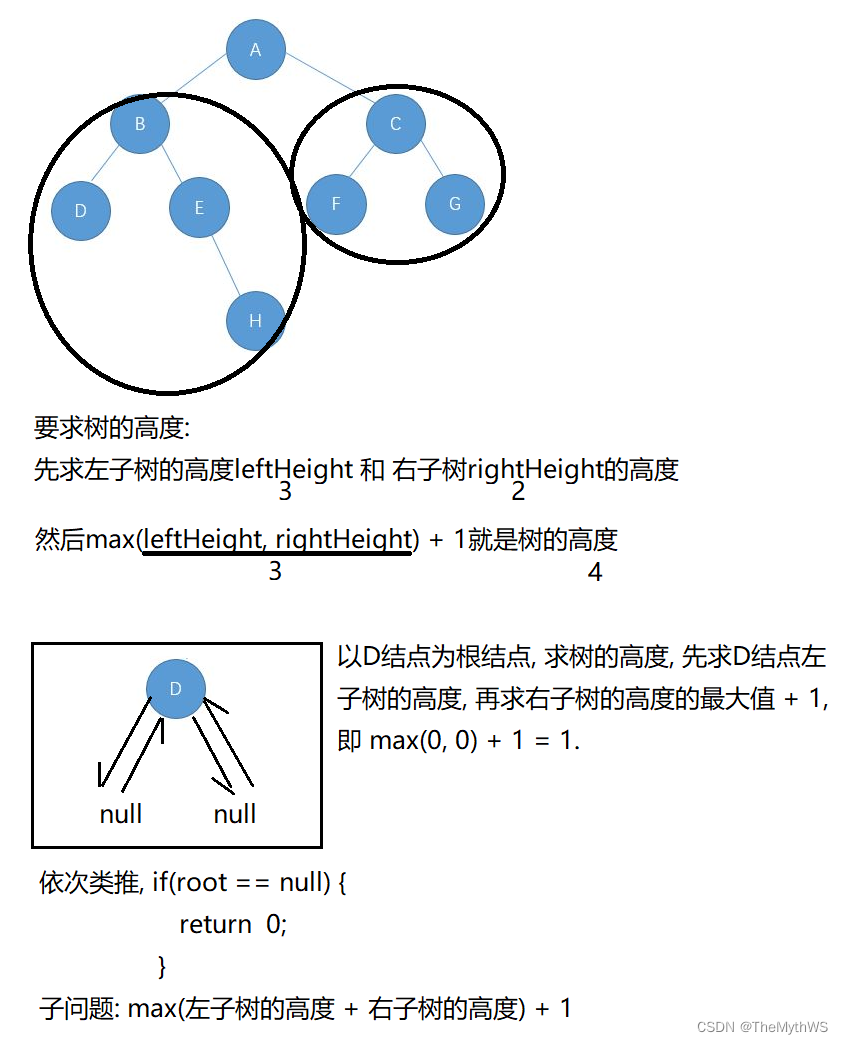
// 获取二叉树的高度
// 时间复杂度O(N), 因为每一个结点都会被访问
// 空间复杂度O(树的高度)
public int getHeight(TreeNode root) {
if (root == null) {
return 0;
}
int leftHeight = getHeight(root.left);
int rightHeight = getHeight(root.right);
return (leftHeight > rightHeight ? leftHeight : rightHeight) + 1;
}public class Test {
public static void main(String[] args) {
TestBinaryTree testBinaryTree = new TestBinaryTree();
TestBinaryTree.TreeNode root = testBinaryTree.createTree();
System.out.println("树的高度: " + testBinaryTree.getHeight(root));
}
}
检测值为value的元素是否存在
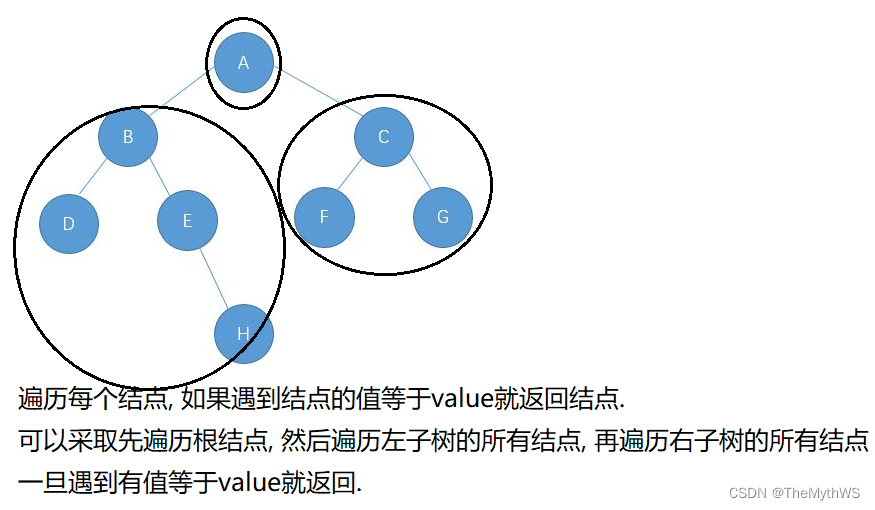
// 检测值为value的元素是否存在
public TreeNode find(TreeNode root, int val) {
if (root == null) {
return null;
}
if (root.val == val) {
return root;
}
TreeNode leftTree = find(root.left, val);
if (leftTree != null) {//左子树找
return leftTree;
}
TreeNode rightTree = find(root.right, val);
if (rightTree != null) {//右子树找
return rightTree;
}
return null;//都没找到
}public class Test {
public static void main(String[] args) {
TestBinaryTree testBinaryTree = new TestBinaryTree();
TestBinaryTree.TreeNode root = testBinaryTree.createTree();
TestBinaryTree.TreeNode E = testBinaryTree.find(root, 'E');
if (E != null){
System.out.println("查找到了E元素, 且E的值为: " + E.val);
} else {
System.out.println("没有此元素!");
}
TestBinaryTree.TreeNode J = testBinaryTree.find(root, 'J');
if (J != null){
System.out.println("查找到了J元素, 且J的值为: " + J.val);
} else {
System.out.println("没有此元素!");
}
}
}
层序遍历

//层序遍历(不带返回值)
public void levelOrder(TreeNode root) {
if (root == null) {
return;
}
Queue<TreeNode> queue = new LinkedList<>();
//先将头结点入队
queue.offer(root);
while (!queue.isEmpty()) {//队列不为空
//出队的同时用cur记录出队的结点, 同时打印出队结点的value
TreeNode cur = queue.poll();
System.out.print(cur.val + " ");
//如果cur的左子树和右子树有结点就入队
if (cur.left != null) {
queue.offer(cur.left);
}
if (cur.right != null) {
queue.offer(cur.right);
}
}
}
public class Test {
public static void main(String[] args) {
TestBinaryTree testBinaryTree = new TestBinaryTree();
TestBinaryTree.TreeNode root = testBinaryTree.createTree();
testBinaryTree.levelOrder(root);
}
} 
判断一棵树是不是完全二叉树

boolean isCompleteTree(TreeNode root){
if (root == null) {
return true;
}
Queue<TreeNode> queue = new LinkedList<>();
queue.offer(root);
while (!queue.isEmpty()) {
TreeNode cur = queue.poll();
if (cur != null) {
queue.offer(cur.left);
queue.offer(cur.right);
} else {
break;
}
}
//走到这儿说明cur == null
while (!queue.isEmpty()) {
TreeNode tmp = queue.poll();
if (tmp != null) {//队列里剩余的元素不全是null, 说明不是完全二叉树
return false;
}
}
return true;
}OJ练习题
1. 检查两颗树是否相同。
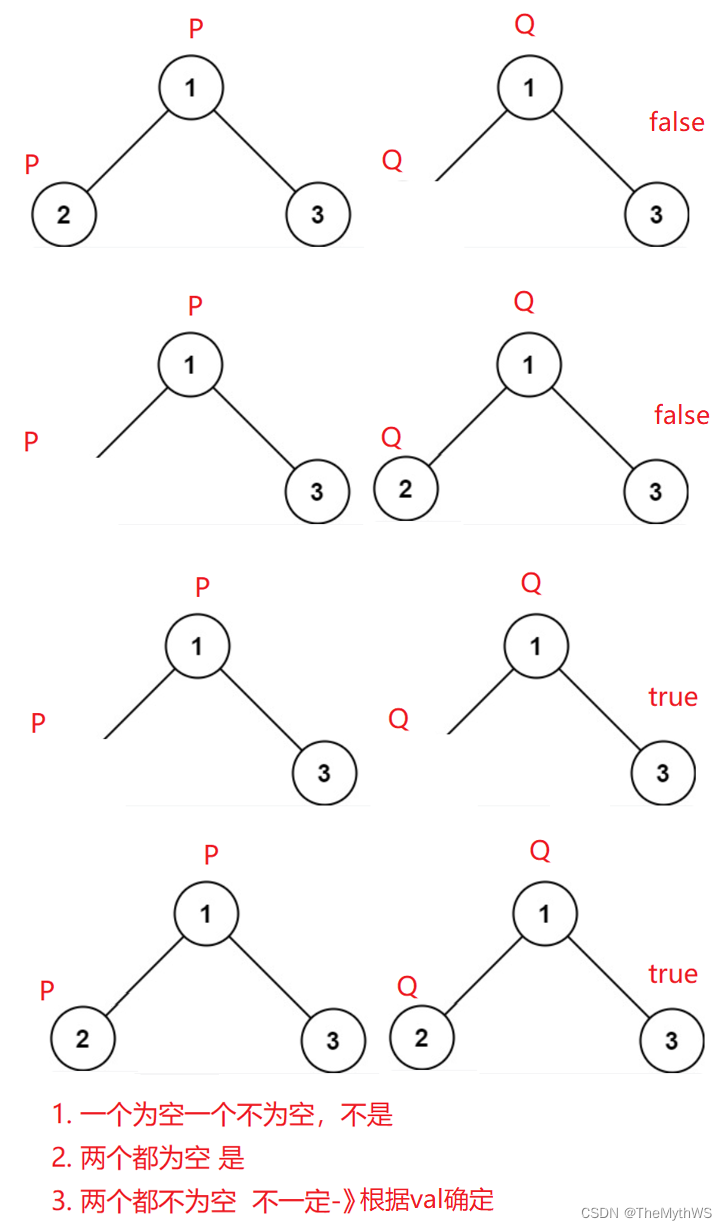
/**
* Definition for a binary tree node.
* public class TreeNode {
* int val;
* TreeNode left;
* TreeNode right;
* TreeNode() {}
* TreeNode(int val) { this.val = val; }
* TreeNode(int val, TreeNode left, TreeNode right) {
* this.val = val;
* this.left = left;
* this.right = right;
* }
* }
*/
class Solution {
//检查两棵树是否相同
//时间复杂度和空间复杂度: O(min(m, n)) m 和 n是结点的个数
//如果一颗树的结点多 一颗树的结点少 必然是不相等的, 所以只需要遍历完结点少的树就行了, 不需要去遍历剩下的结点.
//如果两个树的结点一样, min(m, n) 结果都一样, 大不了最坏情况就O(n)
public boolean isSameTree(TreeNode p, TreeNode q) {
if (p == null && q != null || p != null && q == null) {
return false;
}
//走到这里 要么都是空 要么都不是空
if (p == null && q == null) {//都是空
return true;
}
if (p.val != q.val) {//都不是空, 在判断值是否相等
return false;
}
//p q都不是空, 且值一样, 当前只是判断了根结点是否相同, 所以下面还要进行递归判断左子树和右子树是否一样.
return isSameTree(p.left, q.left) && isSameTree(p.right, q.right);
}
}2.另一颗树的子树。
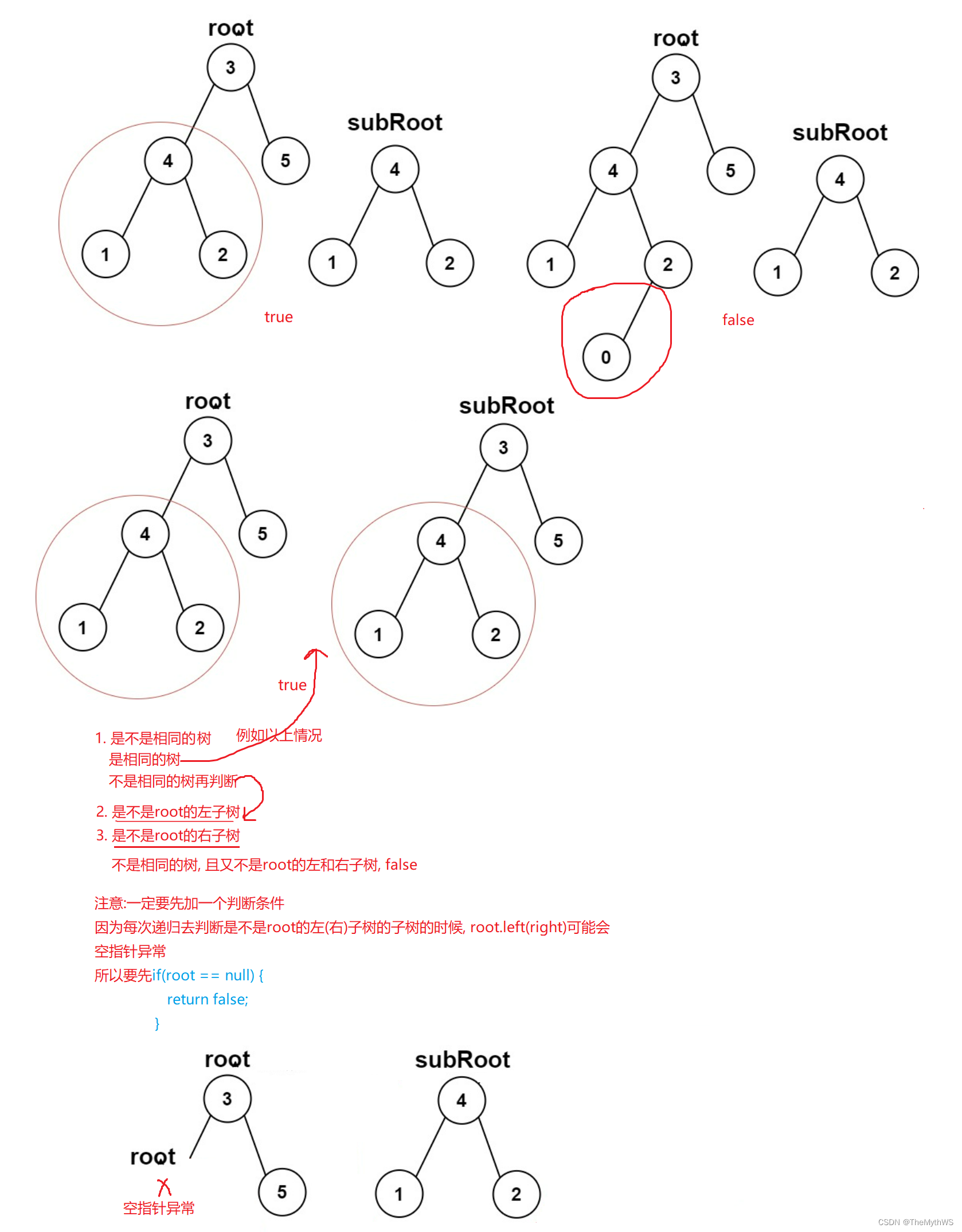
/**
* Definition for a binary tree node.
* public class TreeNode {
* int val;
* TreeNode left;
* TreeNode right;
* TreeNode() {}
* TreeNode(int val) { this.val = val; }
* TreeNode(int val, TreeNode left, TreeNode right) {
* this.val = val;
* this.left = left;
* this.right = right;
* }
* }
*/
class Solution {
//时间复杂度:O(S * T) 对于S上的每一个点都需要做一次深度优先搜索来和T匹配, 匹配一次的时间复杂度是O(T)
//空间复杂度:O(max(ds, dt)), ds 和 dt分别代表两棵树的深度
public boolean isSubtree(TreeNode root, TreeNode subRoot) {
if (root == null) {
return false;
}
if (isSameTree(root, subRoot)) {
return true;
}
if (isSubtree(root.left, subRoot)) {
return true;
}
if (isSubtree(root.right, subRoot)) {
return true;
}
return false;
}
//检查两棵树是否相同
//时间复杂度和空间复杂度: O(min(m, n)) m 和 n是结点的个数
//如果一颗树的结点多 一颗树的结点少 必然是不相等的, 所以只需要遍历完结点少的树就行了, 不需要去遍历剩下的结点.
//如果两个树的结点一样, min(m, n) 结果都一样, 大不了最坏情况就O(n)
public boolean isSameTree(TreeNode p, TreeNode q) {
if (p == null && q != null || p != null && q == null) {
return false;
}
//走到这里 要么都是空 要么都不是空
if (p == null && q == null) {//都是空
return true;
}
if (p.val != q.val) {//都不是空, 在判断值是否相等
return false;
}
//p q都不是空, 且值一样, 当前只是判断了根结点是否相同, 所以下面还要进行递归判断左子树和右子树是否一样.
return isSameTree(p.left, q.left) && isSameTree(p.right, q.right);
}
}3. 翻转二叉树。
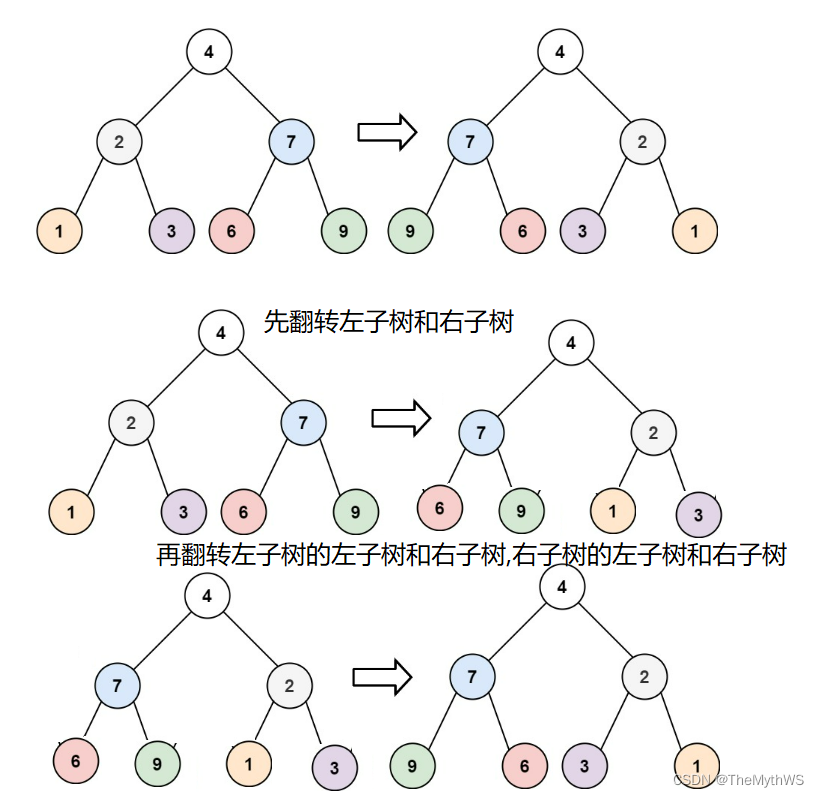
/**
* Definition for a binary tree node.
* public class TreeNode {
* int val;
* TreeNode left;
* TreeNode right;
* TreeNode() {}
* TreeNode(int val) { this.val = val; }
* TreeNode(int val, TreeNode left, TreeNode right) {
* this.val = val;
* this.left = left;
* this.right = right;
* }
* }
*/
class Solution {
public TreeNode invertTree(TreeNode root) {
if (root == null) {
return null;
}
//方法1:利用临时结点来存储要交换的结点值
// TreeNode tmpNode = root.left;
// root.left = root.right;
// root.right = tmpNode;
// //递归进行翻转
// invertTree(root.left);
// invertTree(root.right);
//方法2:利用返回值
TreeNode left = invertTree(root.left);
TreeNode right = invertTree(root.right);
//翻转
root.left = right;
root.right = left;
return root;
}
}4. 判断一颗二叉树是否是平衡二叉树。

/**
* Definition for a binary tree node.
* public class TreeNode {
* int val;
* TreeNode left;
* TreeNode right;
* TreeNode() {}
* TreeNode(int val) { this.val = val; }
* TreeNode(int val, TreeNode left, TreeNode right) {
* this.val = val;
* this.left = left;
* this.right = right;
* }
* }
*/
class Solution {
public boolean isBalanced1(TreeNode root) {
if (root == null) {
return true;
}
int leftHeight = getHeight(root.left);
int rightHeight = getHeight(root.right);
return Math.abs(leftHeight - rightHeight) < 2
&& isBalanced1(root.left)
&& isBalanced1(root.right);
}
// 获取二叉树的高度
// 时间复杂度O(N), 因为每一个结点都会被访问
// 空间复杂度O(树的高度)
public int getHeight(TreeNode root) {
if (root == null) {
return 0;
}
int leftHeight = getHeight(root.left);
int rightHeight = getHeight(root.right);
return (leftHeight > rightHeight ? leftHeight : rightHeight) + 1;
}
//时间复杂度O(N)
public boolean isBalanced(TreeNode root) {
//看返回的是否为正数, 如果是负数说明不平衡
return getHeight2(root) >= 0;
}
// public int getHeight2(TreeNode root) {
// if (root == null) {
// return 0;
// }
// int leftHeight = getHeight2(root.left);
// int rightHeight = getHeight2(root.right);
// if (leftHeight >= 0 && rightHeight >= 0 &&
// Math.abs(leftHeight - rightHeight) <= 1) {
// //return (leftHeight > rightHeight ? leftHeight : rightHeight) + 1;
// return Math.max(leftHeight, rightHeight) + 1;
// } else {//左子树和右子树的高度差超过了2
// return -1;
// }
// }
public int getHeight2(TreeNode root) {
if (root == null) {
return 0;
}
int leftHeight = getHeight2(root.left);
if (leftHeight < 0) {
return -1;
}
int rightHeight = getHeight2(root.right);
if (rightHeight < 0) {
return -1;
}
if (Math.abs(leftHeight - rightHeight) <= 1) {
//return (leftHeight > rightHeight ? leftHeight : rightHeight) + 1;
return Math.max(leftHeight, rightHeight) + 1;
} else {//左子树和右子树的高度差超过了2
return -1;
}
}
}5. 对称二叉树。
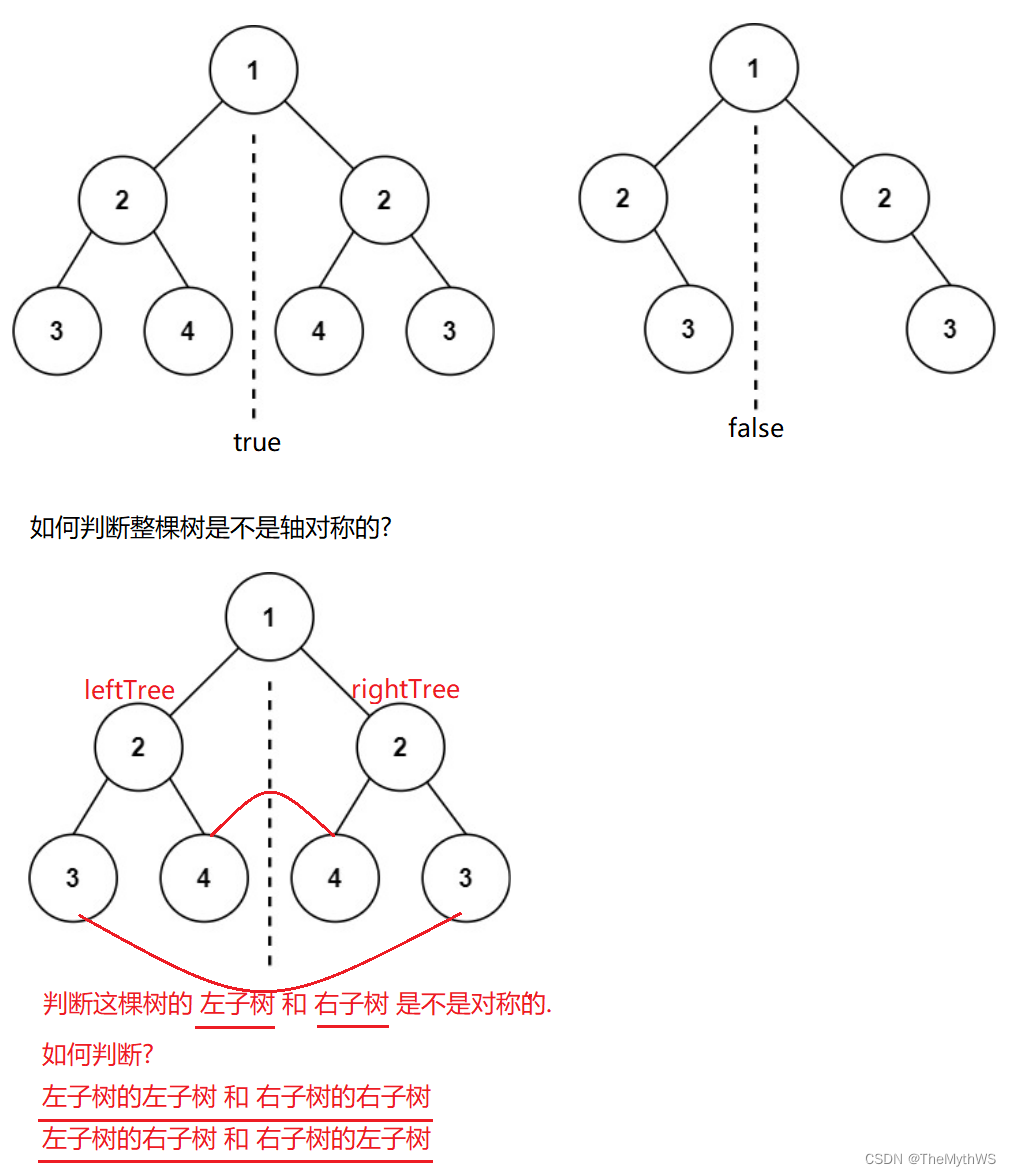
/**
* Definition for a binary tree node.
* public class TreeNode {
* int val;
* TreeNode left;
* TreeNode right;
* TreeNode() {}
* TreeNode(int val) { this.val = val; }
* TreeNode(int val, TreeNode left, TreeNode right) {
* this.val = val;
* this.left = left;
* this.right = right;
* }
* }
*/
class Solution {
public boolean isSymmetric(TreeNode root) {
if (root == null) {
return true;
}
return isSymmetricChild(root.left, root.right);
}
public boolean isSymmetricChild(TreeNode leftTree, TreeNode rightTree) {
if (leftTree != null && rightTree == null || leftTree == null && rightTree != null) {
return false;
}
if (leftTree == null && rightTree == null) {
return true;
}
//走到这里说明左子树和右子树都不为空, 就需要先判断值是否一样
if (leftTree.val != rightTree.val) {
return false;
}
//走到这里说明左子树和右子树不为空, 且值一样
//再判断左子树的左子树和右子树的右子树是否相等, 左子树的右子树和右子树的左子树是否相等.
return isSymmetricChild(leftTree.left, rightTree.right) && isSymmetricChild(leftTree.right, rightTree.left);
}
}6. 二叉树的构建及遍历。
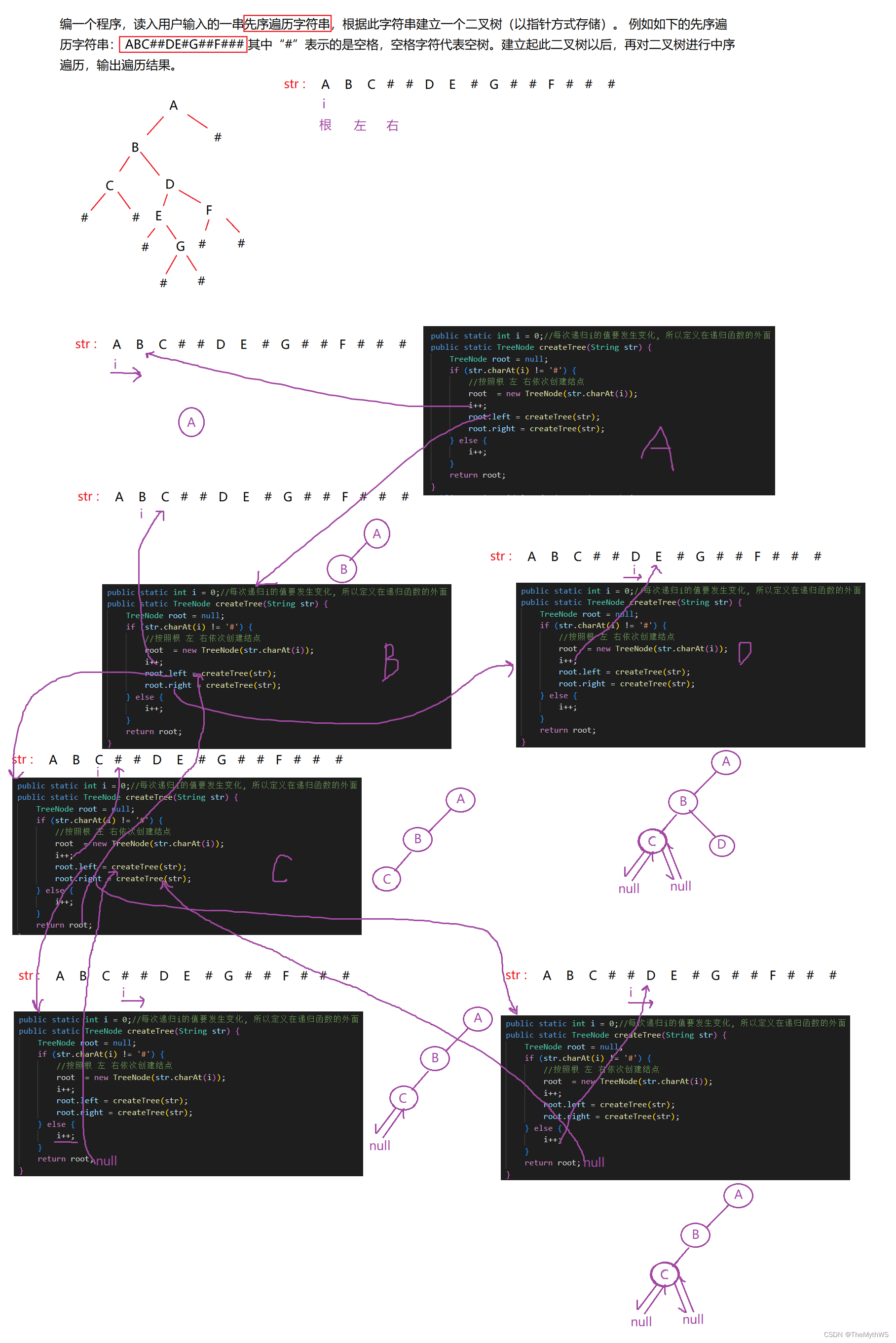
import java.util.Scanner;
class TreeNode {
public char val;
public TreeNode left;
public TreeNode right;
public TreeNode(char val) {
this.val = val;
}
}
// 注意类名必须为 Main, 不要有任何 package xxx 信息
public class Main {
public static void main(String[] args) {
Scanner in = new Scanner(System.in);
// 注意 hasNext 和 hasNextLine 的区别
while (in.hasNextLine()) { // 注意 while 处理多个 case
String str = in.nextLine();
TreeNode root = createTree(str);
inOrder(root);
}
}
public static int i = 0;//每次递归i的值要发生变化, 所以定义在递归函数的外面
public static TreeNode createTree(String str) {
TreeNode root = null;
if (str.charAt(i) != '#') {
//按照根 左 右依次创建结点
root = new TreeNode(str.charAt(i));
i++;
root.left = createTree(str);
root.right = createTree(str);
} else {
i++;
}
return root;
}
public static void inOrder(TreeNode root) {
if (root == null) {
return;
}
inOrder(root.left);
System.out.print(root.val + " ");
inOrder(root.right);
}
}7. 二叉树的层序遍历 。

/**
* Definition for a binary tree node.
* public class TreeNode {
* int val;
* TreeNode left;
* TreeNode right;
* TreeNode() {}
* TreeNode(int val) { this.val = val; }
* TreeNode(int val, TreeNode left, TreeNode right) {
* this.val = val;
* this.left = left;
* this.right = right;
* }
* }
*/
class Solution {
public List<List<Integer>> levelOrder(TreeNode root) {
List<List<Integer>> list = new ArrayList<>();
if(root == null) {
return list;
}
Queue<TreeNode> queue = new LinkedList<>();
queue.offer(root);
while (!queue.isEmpty()) {//队列不为空, 记录当前的结点个数size(相当于每一层的结点), 然后出队size个结点, 然后添加到集合.
int size = queue.size();
List<Integer> tmp = new ArrayList<>();
while (size != 0) {//出队size个结点
TreeNode cur = queue.poll();
tmp.add(cur.val);
size--;
if (cur.left != null) {
queue.offer(cur.left);
}
if (cur.right != null) {
queue.offer(cur.right);
}
}
list.add(tmp);
}
return list;
}
}8. 给定一个二叉树, 找到该树中两个指定节点的最近公共祖先 。
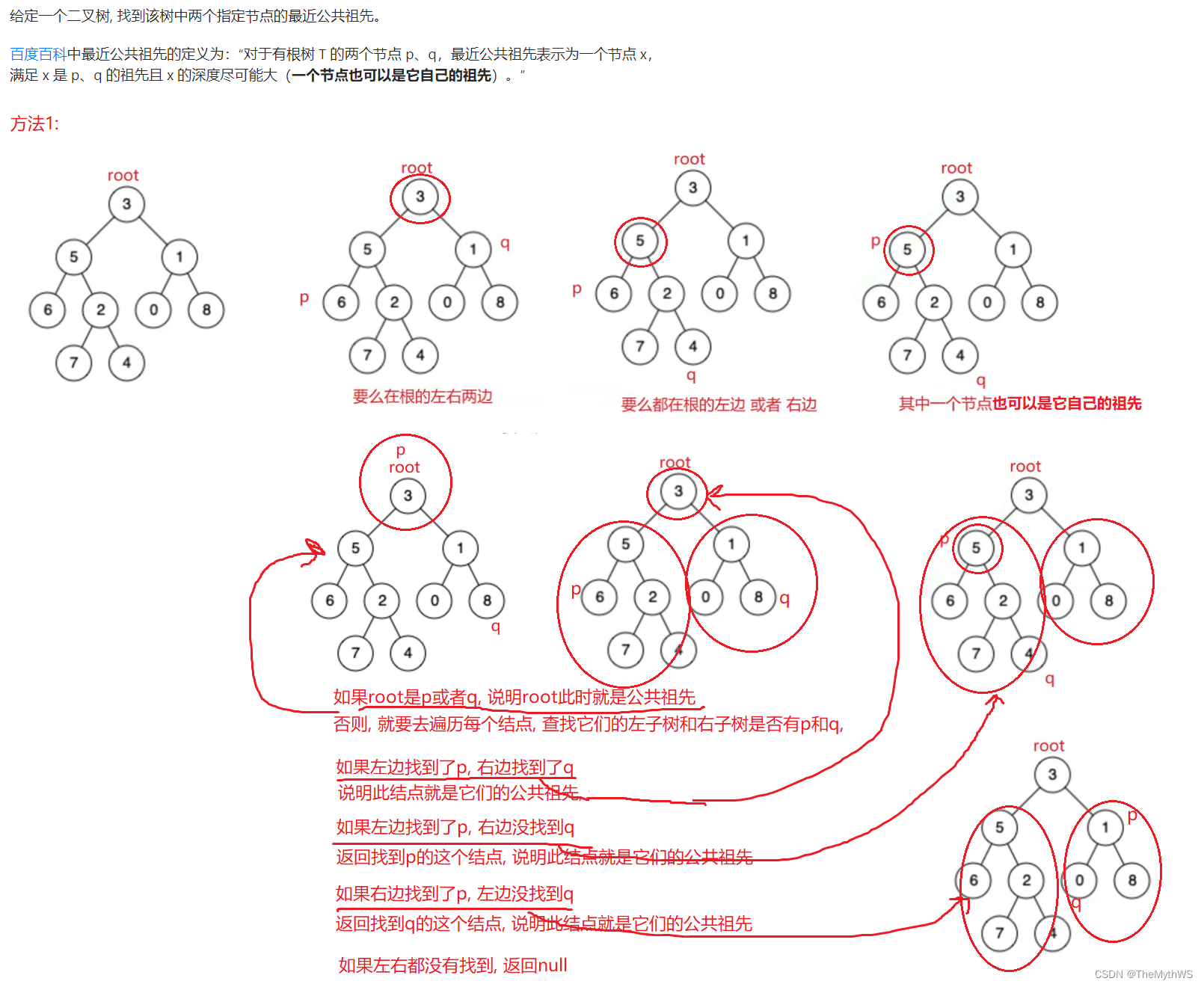

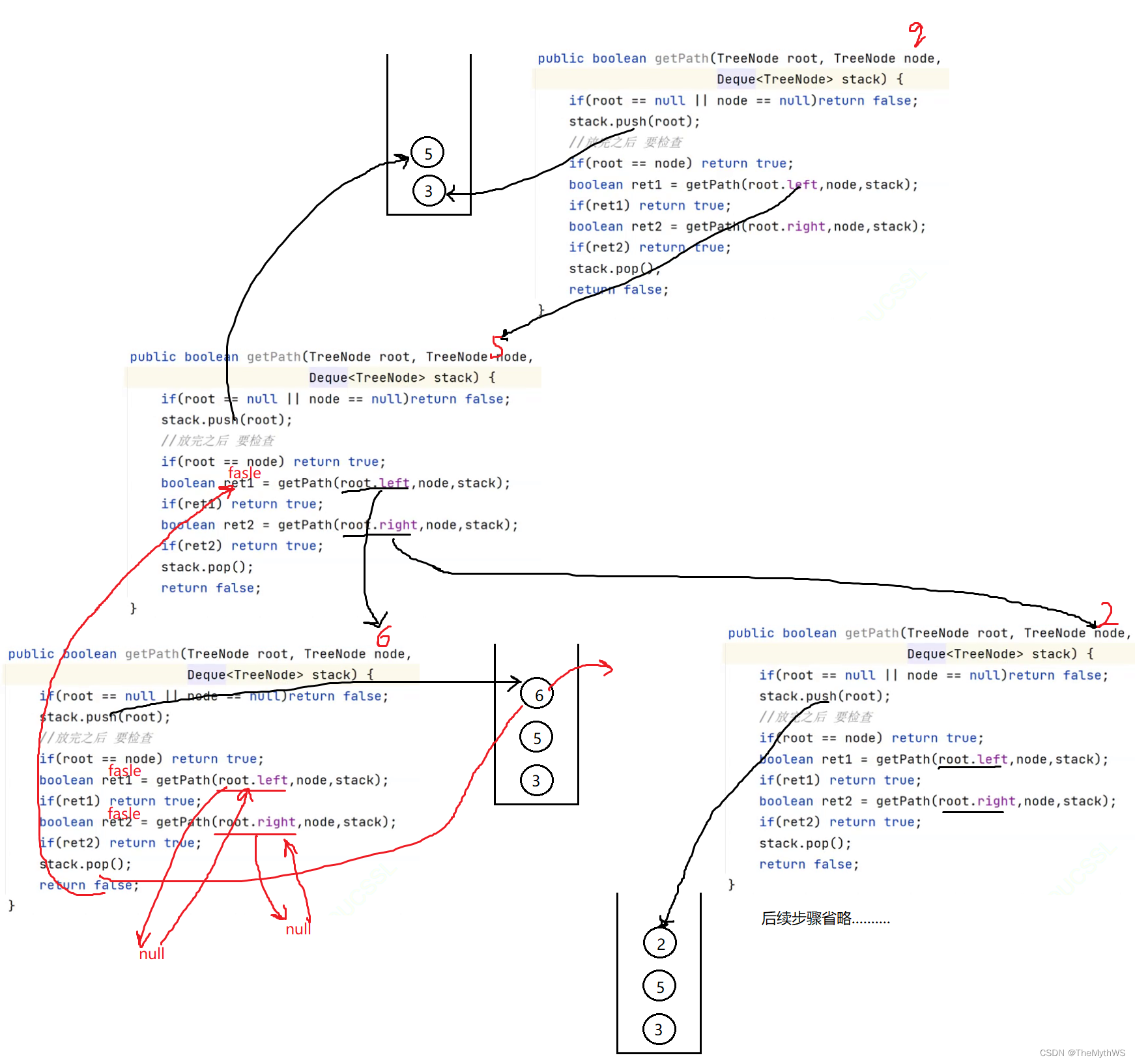
/**
* Definition for a binary tree node.
* public class TreeNode {
* int val;
* TreeNode left;
* TreeNode right;
* TreeNode(int x) { val = x; }
* }
*/
class Solution {
//方法1:
// public TreeNode lowestCommonAncestor(TreeNode root, TreeNode p, TreeNode q) {
// if (root == null) {
// return null;
// }
// //先判断根结点是不是其中的一个
// if (root == p || root == q) {
// return root;
// }
// //去左子树和右子树找是否有p, q
// TreeNode leftRet = lowestCommonAncestor(root.left, p, q);
// TreeNode rightRet = lowestCommonAncestor(root.right, p, q);
// if (leftRet != null && rightRet != null) {//左子树和右子树都找到了p和q
// return root;
// } else if (leftRet != null) {//左子树找到的第一个p或者q, 就是公共祖先
// return leftRet;
// } else if (rightRet != null) {//右子树找到的第一个p或者q, 就是公共祖先
// return rightRet;
// }
// //左子树和右子树都没有找到
// return null;
// }
//方法2:
// 找到根节点到指定节点node路径上的所有的节点, 存放到栈中.
public boolean getPath(TreeNode root, TreeNode node, Deque<TreeNode> stack) {
if (root == null || node == null) {
return false;
}
stack.push(root);
//放完之后 要检查
if (root == node) {
return true;
}
boolean ret1 = getPath(root.left, node, stack);
if (ret1) {//ret1 == true
return true;
}
boolean ret2 = getPath(root.right, node, stack);
if (ret2) {//ret2 == true
return true;
}
stack.pop();
return false;
}
public TreeNode lowestCommonAncestor(TreeNode root, TreeNode p, TreeNode q) {
//1.两个栈当中 存储好数据
Deque<TreeNode> stack1 = new ArrayDeque<>();
getPath(root, p, stack1);
Deque<TreeNode> stack2 = new ArrayDeque<>();
getPath(root, q, stack2);
//2.判断栈的大小
int size1 = stack1.size();
int size2 = stack2.size();
//哪个栈的元素多, 就要先出栈多出来的元素
if (size1 > size2) {
int size = size1 - size2;
while (size != 0) {
stack1.pop();
size--;
}
} else {
int size = size2 - size1;
while (size != 0) {
stack2.pop();
size--;
}
}
//通过上述操作--->栈里面的元素个数是一样的.
while (!stack1.isEmpty() && !stack2.isEmpty()) {
if (stack1.peek() != stack2.peek()) {
stack1.pop();
stack2.pop();
} else {
return stack1.peek();
}
}
return null;
}
}9. 根据一棵树的前序遍历与中序遍历构造二叉树。
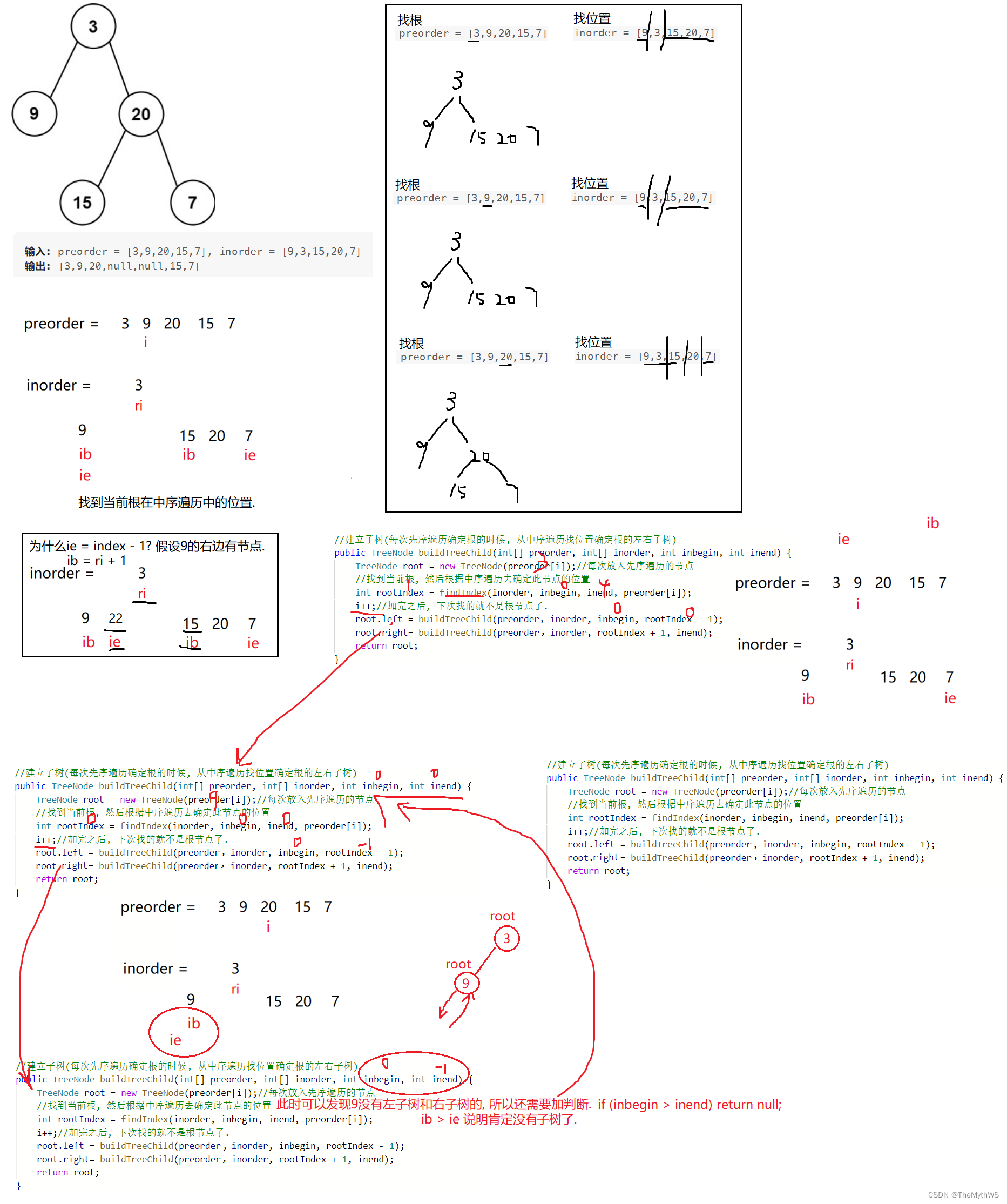
/**
* Definition for a binary tree node.
* public class TreeNode {
* int val;
* TreeNode left;
* TreeNode right;
* TreeNode() {}
* TreeNode(int val) { this.val = val; }
* TreeNode(int val, TreeNode left, TreeNode right) {
* this.val = val;
* this.left = left;
* this.right = right;
* }
* }
*/
class Solution {
public int i = 0;
public TreeNode buildTree(int[] preorder, int[] inorder) {
return buildTreeChild(preorder, inorder, 0, inorder.length - 1);
}
//建立子树(每次先序遍历确定根的时候, 从中序遍历找位置确定根的左右子树)
public TreeNode buildTreeChild(int[] preorder, int[] inorder, int inbegin, int inend) {
if (inbegin > inend) {//说明没有子树了.
return null;
}
TreeNode root = new TreeNode(preorder[i]);//每次放入先序遍历的节点
//找到当前根, 然后根据中序遍历去确定此节点的位置
int rootIndex = findIndex(inorder, inbegin, inend, preorder[i]);
i++;//加完之后, 下次找的就不是根节点了.
root.left = buildTreeChild(preorder, inorder, inbegin, rootIndex - 1);
root.right = buildTreeChild(preorder, inorder, rootIndex + 1, inend);
return root;
}
//根据中序遍历, 确定根的位置
private int findIndex(int[] inorder, int inbegin, int inend, int key){
for (int i = inbegin; i <= inend; i++) {
if (inorder[i] == key) {
return i;
}
}
return -1;
}
}10. 根据一棵树的中序遍历与后序遍历构造二叉树。
/**
* Definition for a binary tree node.
* public class TreeNode {
* int val;
* TreeNode left;
* TreeNode right;
* TreeNode() {}
* TreeNode(int val) { this.val = val; }
* TreeNode(int val, TreeNode left, TreeNode right) {
* this.val = val;
* this.left = left;
* this.right = right;
* }
* }
*/
class Solution {
public int i = 0;
public TreeNode buildTree(int[] inorder, int[] postorder) {
i = postorder.length - 1;//从后往前找.
return buildTreeChild(inorder, postorder, 0, inorder.length - 1);
}
//建立子树(每次后序遍历确定根的时候, 从中序遍历找位置确定根的左右子树)
public TreeNode buildTreeChild(int[] inorder, int[] postorder, int inbegin, int inend) {
if (inbegin > inend) {//说明没有子树了.
return null;
}
TreeNode root = new TreeNode(postorder[i]);//每次放入后序遍历的节点
//找到当前根, 然后根据中序遍历去确定此节点的位置
int rootIndex = findIndex(inorder, inbegin, inend, postorder[i]);
i--;//减完之后, 下次找的就不是根节点了.
//注意:这儿要先建立右树, 因为后序遍历是左 右 根.
root.right = buildTreeChild(inorder, postorder, rootIndex + 1, inend);
root.left = buildTreeChild(inorder, postorder, inbegin, rootIndex - 1);
return root;
}
//根据中序遍历, 确定根的位置
private int findIndex(int[] inorder, int inbegin, int inend, int key) {
for (int i = inbegin; i <= inend; i++) {
if (inorder[i] == key) {
return i;
}
}
return -1;
}
}11. 二叉树创建字符串。

/**
* Definition for a binary tree node.
* public class TreeNode {
* int val;
* TreeNode left;
* TreeNode right;
* TreeNode() {}
* TreeNode(int val) { this.val = val; }
* TreeNode(int val, TreeNode left, TreeNode right) {
* this.val = val;
* this.left = left;
* this.right = right;
* }
* }
*/
class Solution {
public String tree2str(TreeNode root) {
if (root == null) {
return null;
}
StringBuilder stringBuilder = new StringBuilder();
tree2strChild(root, stringBuilder);
return stringBuilder.toString();
}
public void tree2strChild(TreeNode t, StringBuilder stringBuilder) {
if (t == null) {
return;
}
stringBuilder.append(t.val);//把根节点先加入
if (t.left != null) {//左边不为空
stringBuilder.append("(");
tree2strChild(t.left, stringBuilder);//递归左边
stringBuilder.append(")");
} else {//左边为空
if (t.right != null) {//右边不为空
stringBuilder.append("()");
} else {//右边为空
return;
}
}
if (t.right == null) {//右边为空
return;
} else {//右边不为空
stringBuilder.append("(");
tree2strChild(t.right, stringBuilder);//递归右边
stringBuilder.append(")");
}
}
}12. 二叉树前序非递归遍历实现 。
/**
* Definition for a binary tree node.
* public class TreeNode {
* int val;
* TreeNode left;
* TreeNode right;
* TreeNode() {}
* TreeNode(int val) { this.val = val; }
* TreeNode(int val, TreeNode left, TreeNode right) {
* this.val = val;
* this.left = left;
* this.right = right;
* }
* }
*/
class Solution {
//递归的写法:
/*//不好的写法: 没利用返回值 (遍历思路, 遇到一个打印一个)
List<Integer> ret = new ArrayList<>();
public List<Integer> preorderTraversal(TreeNode root) {
//List<Integer> ret = new ArrayList<>();//这句话不能放在这儿, 因为每次递归ret都是新的值.所以要把ret提到函数外面
if(root == null) {
return ret;
}
//System.out.print(root.val+" ");
ret.add(root.val);
preorderTraversal(root.left);
preorderTraversal(root.right);
return ret;
}
*/
/*//将就的写法:
public List<Integer> preorderTraversal(TreeNode root) {
List<Integer> ret = new ArrayList<>();//这儿放到函数内是因为递归调用的不是本身的函数,不会让ret每次是新的值, 而是另一个函数func.
func(root,ret);
return ret;
}
public void func(TreeNode root,List<Integer> ret) {//递归的函数
if(root == null) {
return;
}
//System.out.print(root.val+" ");
ret.add(root.val);
func(root.left,ret);
func(root.right,ret);
}
*/
//子问题思路
// public List<Integer> preorderTraversal(TreeNode root) {
// List<Integer> ret = new ArrayList<>();//如果非要写在这儿, 将每次递归的返回值, 加到ret中
// if (root == null) {
// return ret;
// }
// ret.add(root.val);
// List<Integer> leftTree = preorderTraversal(root.left);
// ret.addAll(leftTree);//addAll(Collection<? extends E> c), 尾插c中的元素, 传入的参数是实现了collection接口且泛型类型<=Integer
// List<Integer> rightTree = preorderTraversal(root.right);
// ret.addAll(rightTree);
// return ret;
// }
//非递归的写法:
public List<Integer> preorderTraversal(TreeNode root) {
List<Integer> ret = new ArrayList<>();
if (root == null) {
return ret;
}
TreeNode cur = root;
Deque<TreeNode> stack = new ArrayDeque<>();
while (cur != null || !stack.isEmpty()) {//如果cur == null && stack == null 说明已经遍历完了.
while (cur != null) {
stack.push(cur);
//System.out.print(cur.val + " ");
ret.add(cur.val);
cur = cur.left;
}
//左边为空, 弹出栈顶的元素
TreeNode top = stack.pop();
cur = top.right;
/*
如果右边为空, 最外层的while循环也进入不了,
但是如果此时栈内还有元素, 也可以进入最外层while循环, 但是不能进入最内层while循环
然后弹出栈顶的元素
*/
//如果右边不为空, 循环也可以进入, 将新的元素压栈
}
return ret;
}
}13. 二叉树中序非递归遍历实现。
/**
* Definition for a binary tree node.
* public class TreeNode {
* int val;
* TreeNode left;
* TreeNode right;
* TreeNode() {}
* TreeNode(int val) { this.val = val; }
* TreeNode(int val, TreeNode left, TreeNode right) {
* this.val = val;
* this.left = left;
* this.right = right;
* }
* }
*/
class Solution {
//递归写法:
// public List<Integer> inorderTraversal(TreeNode root) {
// List<Integer> ret = new ArrayList<>();//如果非要写在这儿, 将每次递归的返回值, 加到ret中
// if (root == null) {
// return ret;
// }
// List<Integer> leftTree = inorderTraversal(root.left);
// ret.addAll(leftTree);//addAll(Collection<? extends E> c), 尾插c中的元素, 传入的参数是实现了collection接口且泛型类型<=Integer
// ret.add(root.val);
// List<Integer> rightTree = inorderTraversal(root.right);
// ret.addAll(rightTree);
// return ret;
// }
//非递归写法:
public List<Integer> inorderTraversal(TreeNode root) {
List<Integer> ret = new ArrayList<>();
if (root == null) {
return ret;
}
TreeNode cur = root;
Deque<TreeNode> stack = new ArrayDeque<>();
while (cur != null || !stack.isEmpty()) {//如果cur == null && stack == null 说明已经遍历完了.
while (cur != null) {
stack.push(cur);
cur = cur.left;
}
//左边为空, 弹出栈顶的元素
TreeNode top = stack.pop();
//System.out.print(cur.val + " ");
ret.add(top.val);
cur = top.right;
/*
如果右边为空, 最外层的while循环也进入不了,
但是如果此时栈内还有元素, 也可以进入最外层while循环, 但是不能进入最内层while循环
然后弹出栈顶的元素
*/
//如果右边不为空, 循环也可以进入, 将新的元素压栈
}
return ret;
}
}14. 二叉树后序非递归遍历实现。
/**
* Definition for a binary tree node.
* public class TreeNode {
* int val;
* TreeNode left;
* TreeNode right;
* TreeNode() {}
* TreeNode(int val) { this.val = val; }
* TreeNode(int val, TreeNode left, TreeNode right) {
* this.val = val;
* this.left = left;
* this.right = right;
* }
* }
*/
class Solution {
//递归实现:
// public List<Integer> postorderTraversal(TreeNode root) {
// List<Integer> ret = new ArrayList<>();//如果非要写在这儿, 将每次递归的返回值, 加到ret中
// if (root == null) {
// return ret;
// }
// List<Integer> leftTree = postorderTraversal(root.left);
// ret.addAll(leftTree);//addAll(Collection<? extends E> c), 尾插c中的元素, 传入的参数是实现了collection接口且泛型类型<=Integer
// List<Integer> rightTree = postorderTraversal(root.right);
// ret.addAll(rightTree);
// ret.add(root.val);
// return ret;
// }
//非递归实现:
public List<Integer> postorderTraversal(TreeNode root) {
List<Integer> ret = new ArrayList<>();
if (root == null) {
return ret;
}
TreeNode cur = root;
TreeNode prev = null;//这个引用用来记录已经打印过的节点
Deque<TreeNode> stack = new ArrayDeque<>();
while (cur != null || !stack.isEmpty()) {//如果cur == null && stack == null 说明已经遍历完了.
while (cur != null) {
stack.push(cur);
cur = cur.left;
}
//左边为空, 查看栈顶的元素
TreeNode top = stack.peek();
if (top.right == null || top.right == prev) {//如果栈顶元素的右边为空或者栈顶元素的右边已经打印过--->打印 + 弹出栈顶元素
//System.out.print(top.val + " ");
ret.add(top.val);
stack.pop();
prev = top;
} else {
cur = top.right;
}
//如果右边为空, 最外层的while循环也进入不了,
//但是如果此时栈内还有元素, 也可以进入最外层while循环, 但是不能进入最内层while循环
//然后查看栈顶的元素, 再判断.
//如果右边不为空, 循环也可以进入, 将新的元素压栈
}
return ret;
}
}15.二叉树的深度。
/**
* Definition for a binary tree node.
* public class TreeNode {
* int val;
* TreeNode left;
* TreeNode right;
* TreeNode() {}
* TreeNode(int val) { this.val = val; }
* TreeNode(int val, TreeNode left, TreeNode right) {
* this.val = val;
* this.left = left;
* this.right = right;
* }
* }
*/
class Solution {
public int maxDepth(TreeNode root) {
if (root == null) {
return 0;
}
int leftHeight = maxDepth(root.left);
int rightHeight = maxDepth(root.right);
return (leftHeight > rightHeight ? leftHeight : rightHeight) + 1;
}
}


